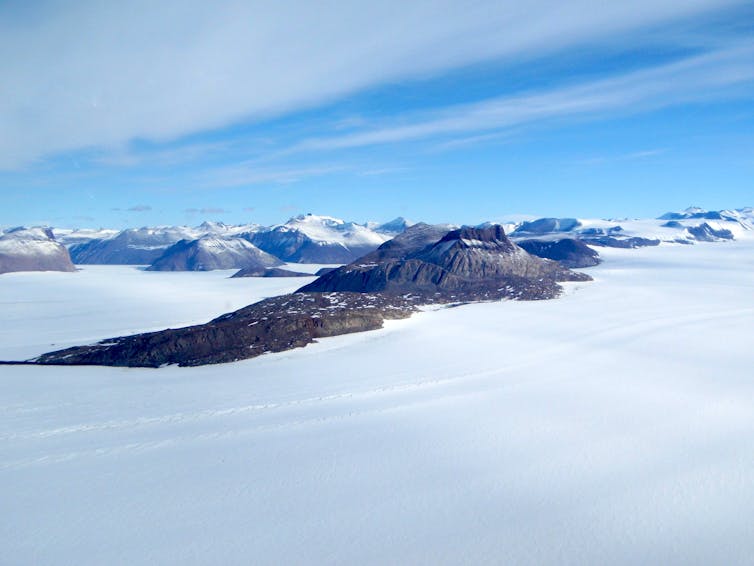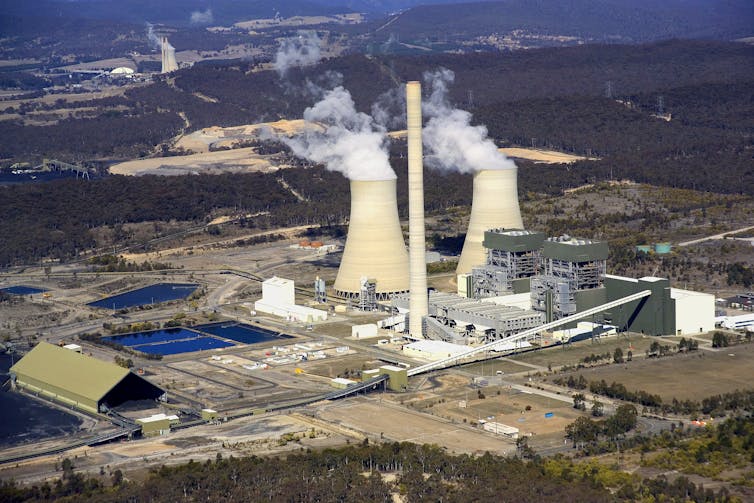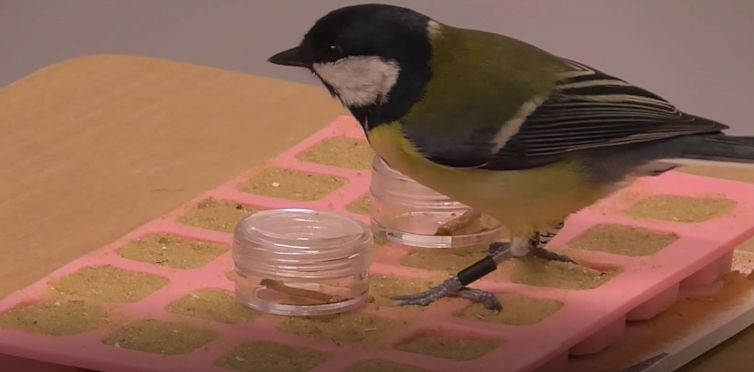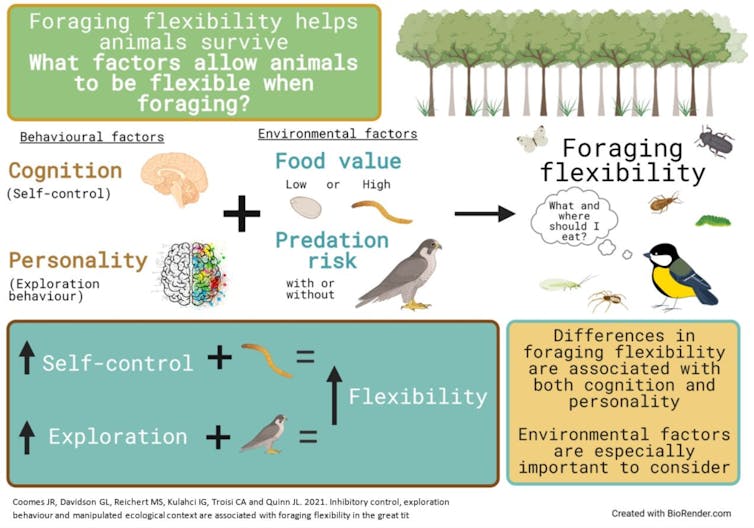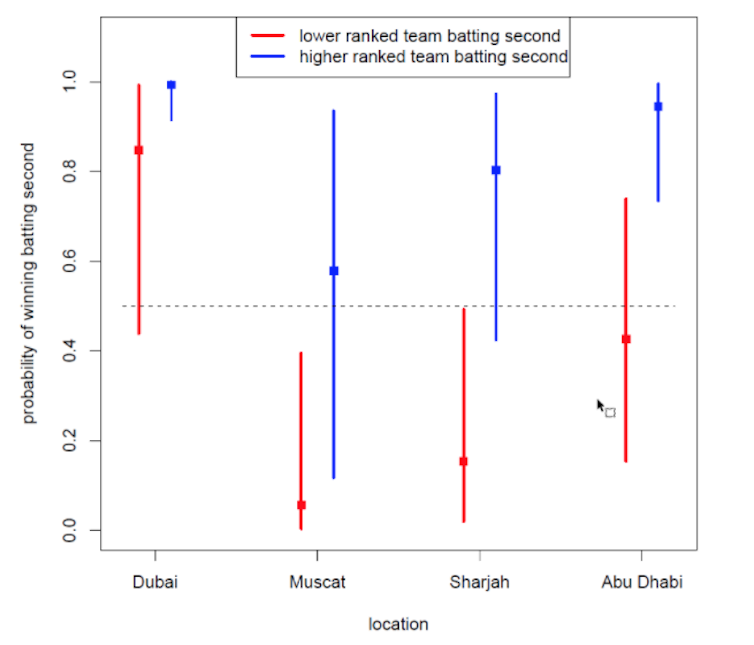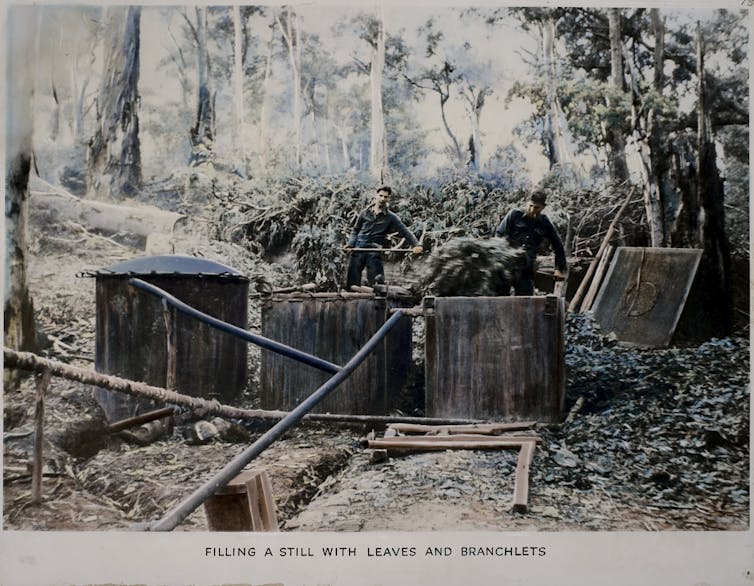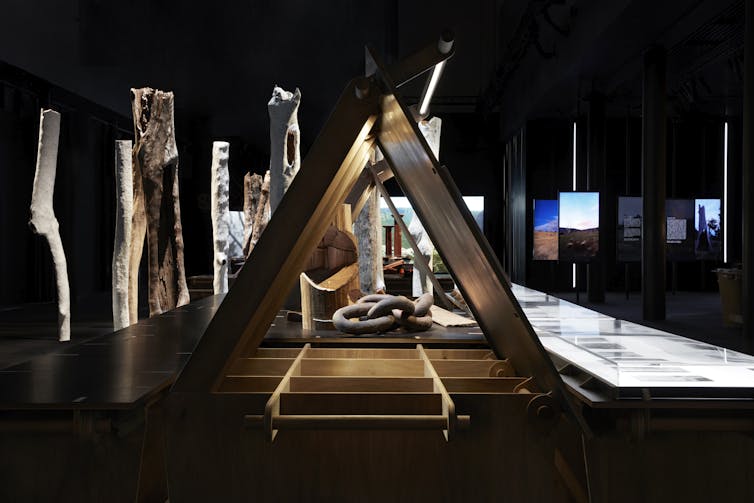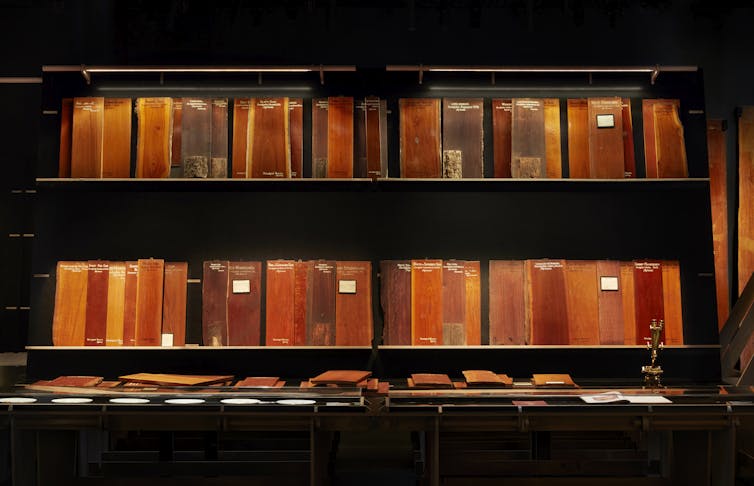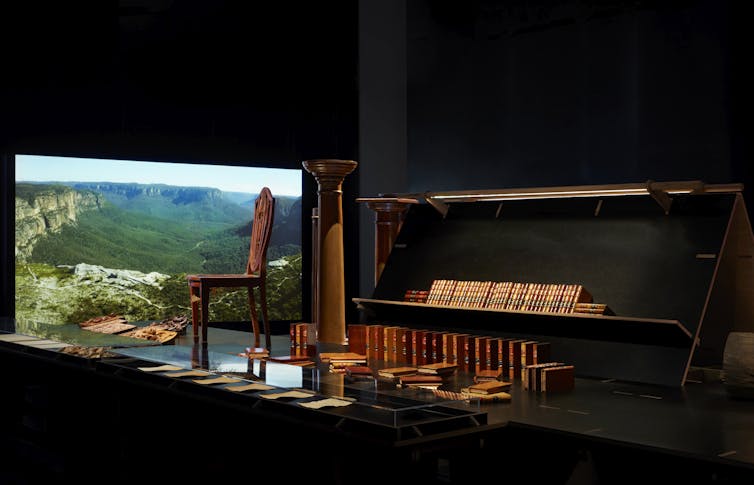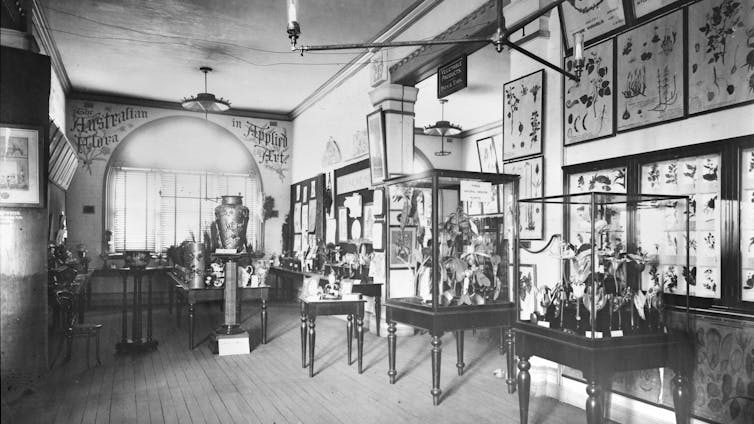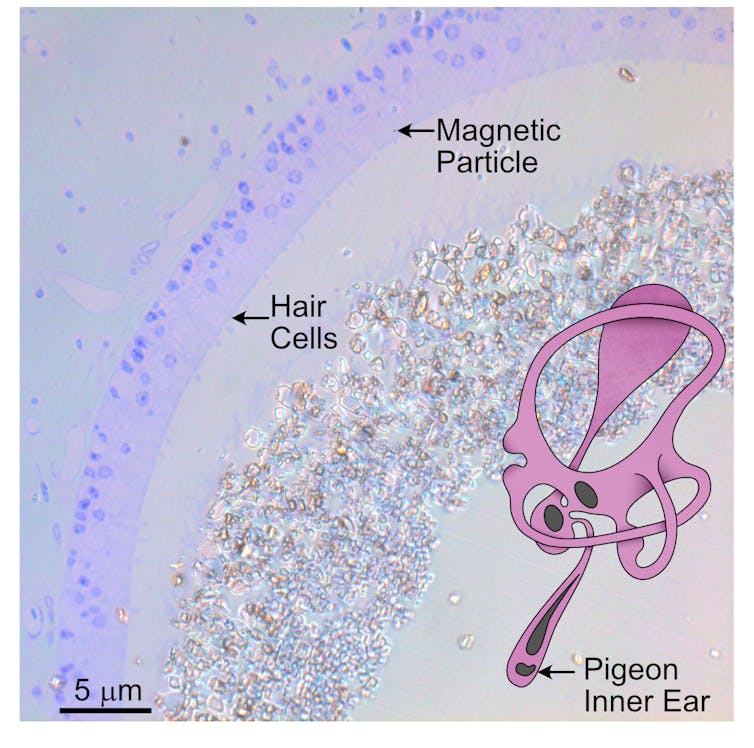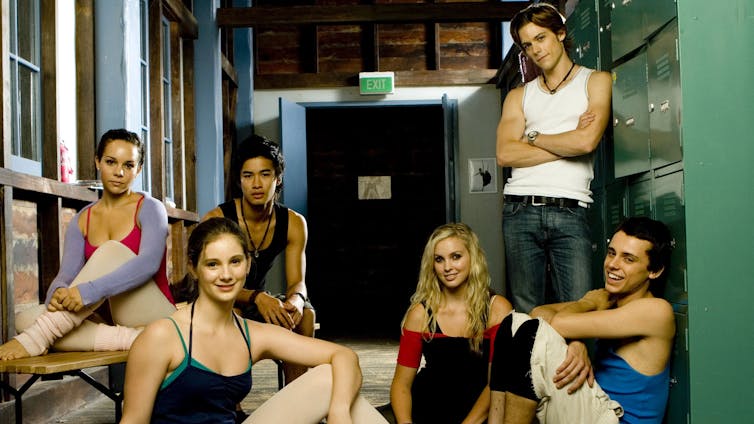inbox and environment news: Issue 519
November 21 - 27, 2021: Issue 519

Phasing Out Single-Use Plastics In NSW
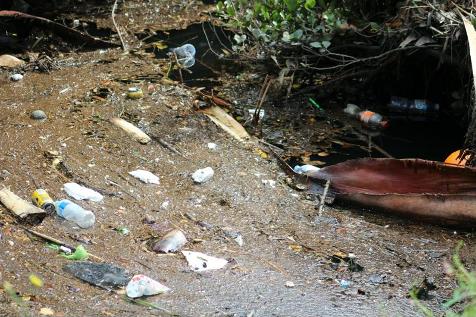 On November 16 2021, the NSW Government passed the Plastic Reduction and Circular Economy Act 2021. This legislation delivers on the government’s commitment to ban certain problematic plastics, such as single-use plastics and address the problem of plastic waste.
On November 16 2021, the NSW Government passed the Plastic Reduction and Circular Economy Act 2021. This legislation delivers on the government’s commitment to ban certain problematic plastics, such as single-use plastics and address the problem of plastic waste.From 1 June 2022 The Following Will Be Banned:
- barrier bags such as bin liners, human or animal waste bags
- produce bags and deli bags
- bags used to contain medical items (excluding bags provided by a retailer to a consumer used to transport medical items from the retailer).
From 1 November 2022 The Following Will Be Banned:
- serving utensils such as salad servers or tongs
- items that are an integrated part of the packaging used to seal or contain food or beverages, or are included within or attached to that packaging, through an automated process (such as a straw attached to a juice box).
- single-use plastic bowls designed or intended to have a spill-proof lid, such as those used for a takeaway soup.
Expanded Polystyrene (EPS) Food Service Items
- meat or produce trays
- packaging, including consumer and business-to-business packaging and transport containers
- food service items that are an integrated part of the packaging used to seal or contain food or beverages, or are including within or attached to that packaging, through an automated process (such as an EPS noodle cup).
Single-Use Plastic Cotton Buds And Microbeads In Certain Personal Care Products
- polyethylene (PE)
- polypropylene (PP)
- polyethylene terephthalate (PET)
- polymethyl methacrylate (PMMA)
- nylon (PA).
Careel Creek: Dusky Moorhen + Chicks In Residence - Please Keep Your Dogs On Their Leads
Dusky Moorhen in Careel Creek, Saturday October 30, 2021 - photos by A J Guesdon
Dusky Moorhen in Careel Creek, Thursday November 30, 2021 - photos by A J Guesdon
Canopy Keepers Offer 100 Trees For Avalon Beach 100 Celebration
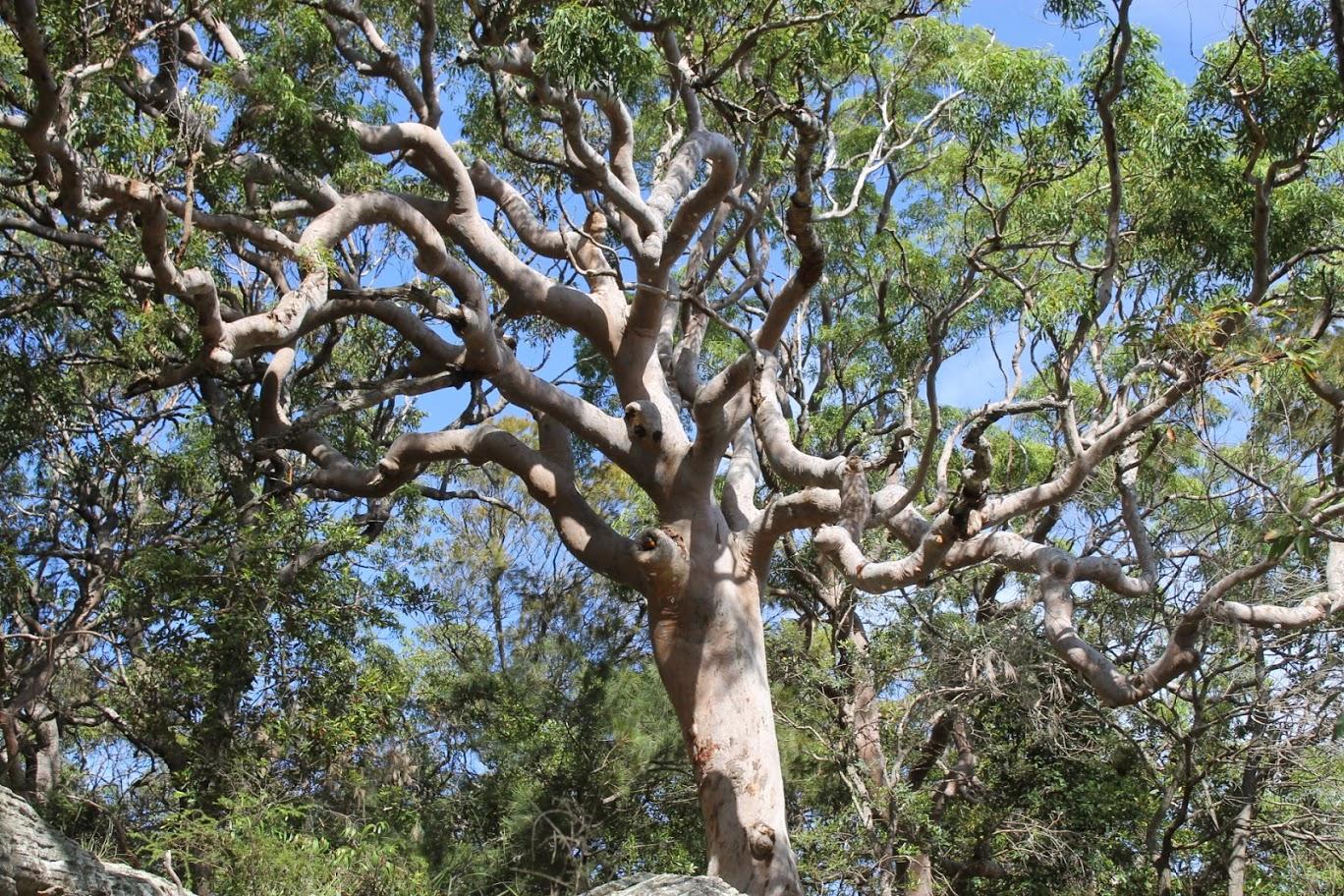
A group of local tree enthusiasts is inviting Avalon Beach residents to celebrate the suburb’s 100th anniversary by planting a tree.
Canopy Keepers convenor Deb Collins said Pittwater residents are surrounded by a unique urban tree canopy covering nearly 60 per cent of the area.
However, between 2009 and 2016 the Pittwater Local Government Area lost more canopy than any other in NSW - due to development and the removal of trees from residential land.
So to celebrate the naming of Avalon Beach 100 years ago, Canopy Keepers will plant at least 100 trees in the 2107 postcode in coming months, Ms Collins said.
Avalon Beach residents and others in the postcode area are therefore invited to apply for one of these trees at no cost, to plant and care for the next generation of canopy, she said.
“We are looking for 100 recipients - 100 new Canopy Keepers,” Ms Collins said.
“Will you help us grow the future and become a canopy keeper, so that we can ensure our children and grandchildren enjoy the benefits of our wonderful urban forest?” Ms Collins said.
“The radical changes to our environment are not just upsetting residents.
“Forty per cent of all wildlife relies on a connected canopy to nest, raise their young and travel between food and water sources.
“The simple removal of ‘just one tree’ can break a critical link in a canopy pathway and threaten the habitat of wildlife such as Squirrel gliders, Powerful owls, and of course the much loved Koala, now extinct from our area but remembered here by so many of us from our childhood.
“We can do much to prevent our wildlife and trees from suffering the same fate as the Koala.
“But it will take a noisy village to achieve this.
“Please join our growing community and ensure Avalon and Pittwater in 100 years are as beautiful as they are today.”
Residents are asked to fill in the following form before December 10 and Canopy Keepers will offer you a tree that is best suited to where you live.
https://forms.gle/hPAVdU5qYT4YzgAc6
Otherwise please email Canopy Keepers at 100trees@canopykeepers.org.au
Find Canopy Keepers at the Avalon car boot sale, on Sunday December 19, where registered tree recipients will be able to pick up their trees for planting.
Canopy keepers is a local group dedicated to the preservation and regeneration of tree canopy in our local area. We want to link arms with all our neighbours and bring to life the vision of homes amongst the trees not shrubs along the edge.
Find out more at: www.canopykeepers.org.au
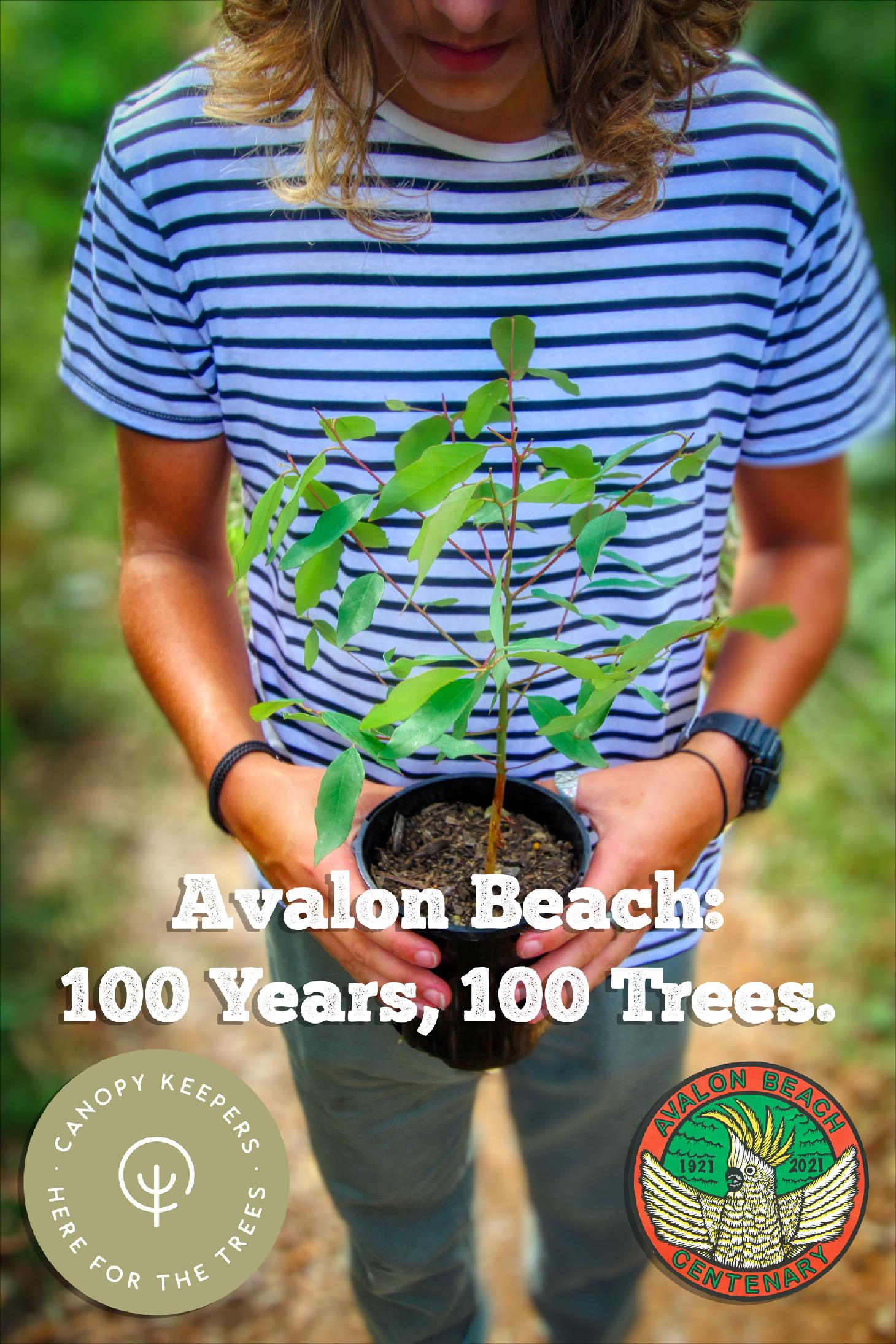
November 2021 Forum For Friends Of Narrabeen Lagoon Catchment: Fishing Bats And Water Rats (Rakali)
.jpg?timestamp=1631741816240)
.jpg?timestamp=1631741908384)
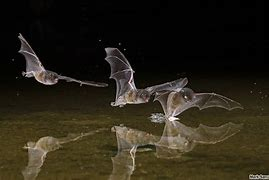

North Head Scenic Area Upgrade
The National Parks and Wildlife Service is improving visitor access at North Head, Sydney Harbour National Park.
North Head, in Sydney Harbour National Park, is a diverse site with significant cultural and environmental values receiving over 500,000 local, domestic and international visitors each year. North Head is listed on the National Heritage List.
This is being delivered as part of the largest visitor infrastructure program in national park history and aligns with the outcomes for North Head outlined in the Sydney Harbour National Park Plan of Management (2012).
North Head Lookouts
The concept plans for new lookouts at North Head have been released. The lookouts will replace the original Fairfax lookouts which were closed in past years due to the geotechnical risk associated with the unstable nature of the sandstone cliff faces.
The NSW Department of Environment worked with local architects CHROFI and Aboriginal consultancy Bangawarra to design lookouts which address geo-technical risk, maintain visitor safety, maximise viewing space and use materials which can withstand the harsh environment whilst and responding to Country and the character of the surrounding landscape. As part of this process new names for each lookout are proposed to acknowledge Connection to Country.
Burragula is proposed for the Southern Lookout and acknowledges the long-nosed bandicoot found in this local area which, 'is an important animal on this Country' and 'for its association with burragula (sunset), the time of the day in which it can be readily observed scurrying through the landscape'.
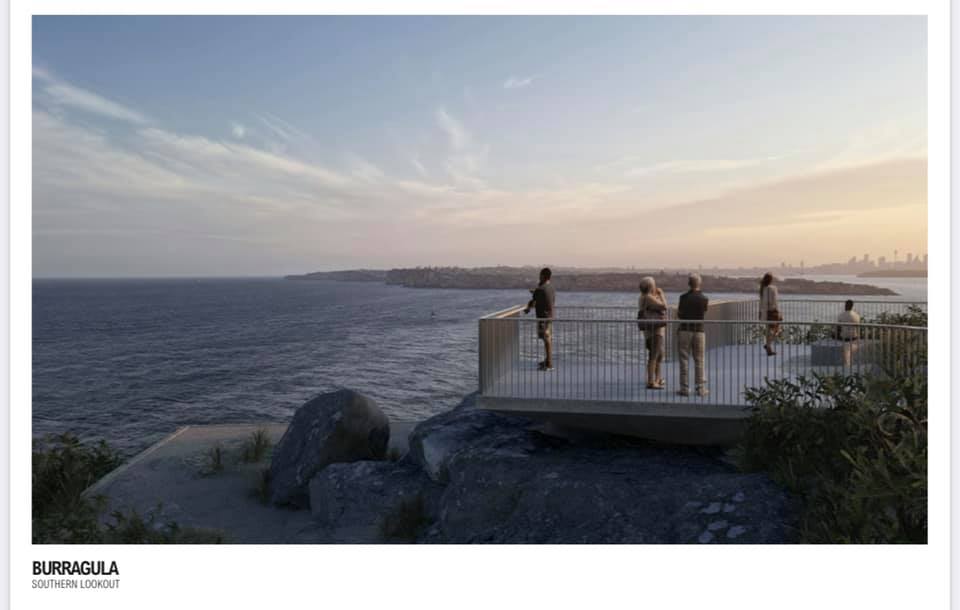

At the Northern Lookout, yiningma (a cliff edge) is a place where 'views far out to sea can be enjoyed whilst also being able to look back on the many layers of rock and earth that forms the coast itself.'


The Fairfax track and the new lookouts will be fully accessible once complete and disabled parking is provided at the entrance to the track.
The concept plans for the lookouts are available for download here. You can also read more about the connections to Country and how this has influenced the design.
Migratory Bird Season
Baby Wildlife Season

Harry the ringtail possum. Sydney Wildlife photo
Boobook Owl And Baby Possum Rescue; Sydney Wildlife Rescue Volunteer
Helen Pearce is one of our local Sydney Wildlife volunteers - last week she got a call for a raptor rescue.
Helen says; ''As a licensed wildlife rescuer, I get to deal with some pretty cool animals, but today was a beautiful privilege.
Sydney Wildlife Rescue had a call at about 8:30 this morning for an owl on the ground. Thinking it’d be a Tawny chick (who is not an owl, not even a nightjar, but has very recently been reclassified in its own classification order), but preparing for a Powerful Owl, I set out with all necessary equipment. When I arrived, I found the most gorgeous fledgling Boobook owl. What a cutey!

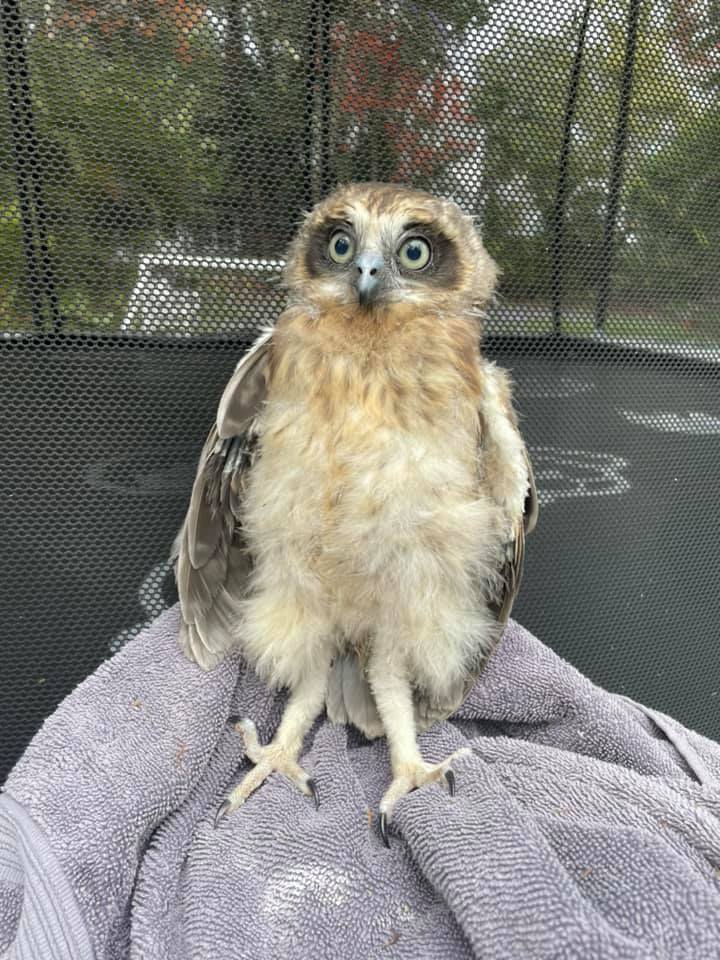
The parents were around and watching and rather concerned as to what we were going to do with their precious baby. Fluttering between Jo’s and Lisa Yost Palmer ‘s garden, I caught the petrified little fluffball of claws and sharp beak and we formulated a plan.
Having consulted with SWR’s experienced raptor coordinator, we made a make-shift nest and Jo and Lisa’s amazing husbands scaled a tree and started fixing the new ‘nest’ as high as we practically could and placed ‘Fluffy’ in.
This evening, mum and dad have tended to the chick and there’s a second chick still in the original nest!
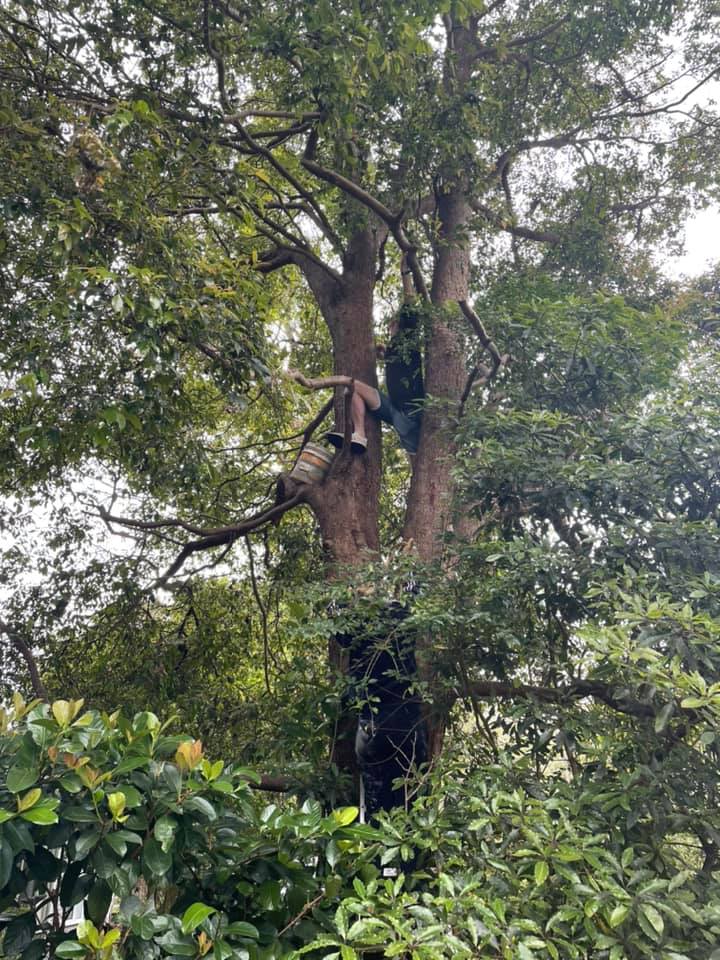
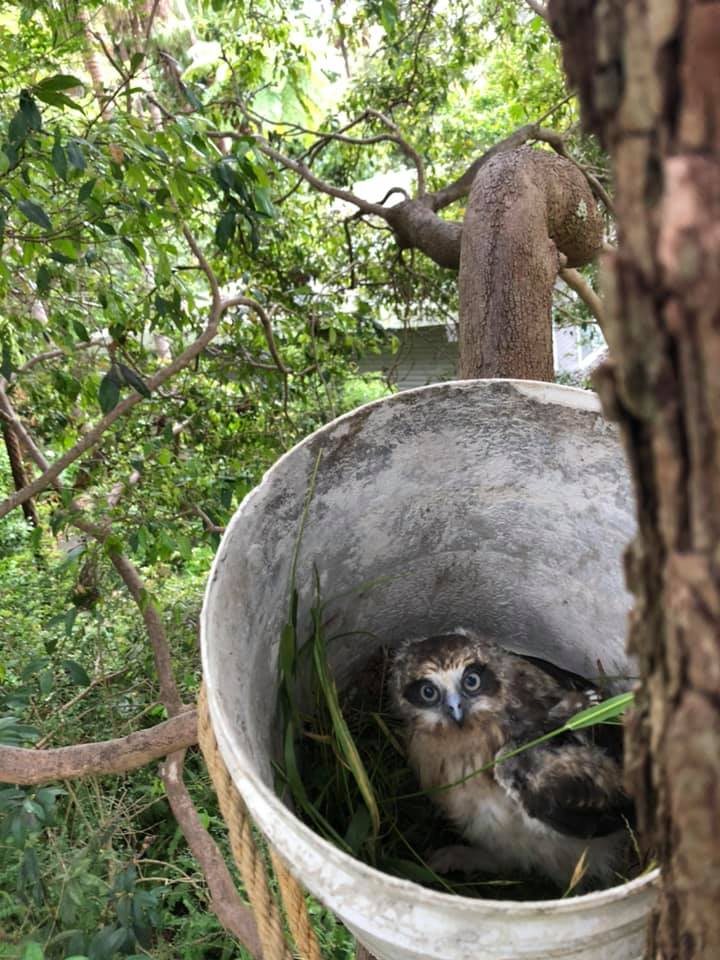
I’d like to extend my massive thanks to all involved for the effort made to help these birds. It’s great to know there’s people like these guys who care so deeply about our wildlife. Chicks of all species are fledging at the moment and may need a little extra help from us humans.''
The other recent rescue Helen has attended is a baby possum. More and more of these are coming into care as their tree homes are cut down without any checking to see if they are already inhabited by our wildlife.
Helen says;
''It’s baby season! And I have a huge soft spot for brushtail possums.
The little guy in this photo is a 300g brushtail Joey. He was found all alone, in the middle of the day on a concrete slab by the side of a building. How he wasn’t already dead, I don’t know. Cats, dogs, birds, snakes, humans……hunger, dehydration, exposure to the sun, wind, cold……either way, he’s a very lucky boy. What happened to his mum is unknown.
He’s very scared. He doesn’t know what’s happened to him, who this strange thing is who’s trying to feed a funny-tasting milk to him, where his mum is. He cries at night, calling for his mum, but she doesn’t come.
He will settle in a day or two and get used to the new milk (which is a specialised marsupial milk, purely for his stage of development. Other various types of milks can kill him) and he’ll begin to trust me, but I can’t replace his mum.


If you find a Joey on its own, it needs help. If you find one, please try to contain it and keep it safe from predators and exposure and call either Sydney Wildlife (Sydney Metropolitan Wildlife Services) or WIRES. If you find a dead possum (ringtail or brushtail), please check the pouch for a Joey. Brushies generally have one but ringtails will have 2, sometimes three. If you are unable to, that’s ok, but please call it in to a wildlife organisation so someone can attend to it.
If you find a native animal in need, or if you have concerns, please call either
Sydney Wildlife Rescue - 02 9413 4300
Or WIRES - 1300 094 737
NB: Please do not attempt to handle a raptor, snake or other wild animals unless you are trained as you may cause injury to them or yourself.
Photos: Helen Pearce
Petition: Purchase Critical Koala Habitat In Port Macquarie
Currently being circulated is an e-petition calling on the NSW Government to purchase critical koala habitat in Port Macquarie.
Local koala care rescuers in Port Macquarie have shared photos of just some of the of the koalas they have had to help rescue in Port Macquarie due ultimately to ongoing habitat loss.
The local koala population suffered huge casualties with the 2019/2020 bushfires. The remaining unburnt core habitat around Lake Innes has become critical to sustain those individuals that survived the fires. An assessment by DPIE’s Biodiversity and Conservation Division concluded that post-fire, the urban population of koalas is now critical to Port Macquarie-Hastings Council LGA overall population if it has any hope of recovery. However, their habitat is shrinking rapidly because of ongoing land clearing for greenfield urban development.
Without a home to return rescued koalas to they stand no chance of survival.
You can sign the petition HERE

Gardens Of Stone And The Lost City Adventures
Over 30,000 hectares of NSW state forests, including the iconic Gardens of Stone will be transformed into a new eco-tourism and adventure destination on the edge of the Blue Mountains near Lithgow.
The centrepiece of the investment will be the Lost City Adventure Experience, an iconic project, that will include Australia's longest zipline and a spectacular elevated canyon walk.
It will also feature NSW's first Via Ferrata rock-climbing opportunity, a protected climbing route employing steel cables, rungs or ladders, fixed to the rock that climbers can safely attach to.
Premier Dominic Perrottet said the NSW Government was investing $50 million to transform the area, which will be added to the national parks estate, into an eco-tourism and eco-adventure destination generating jobs and economic growth for the entire region.
"We're investing record amounts in our national parks to protect our natural gems while also generating new industries in our regions to support jobs and creating new iconic experiences so more people can enjoy our natural wonders," Mr Perrottet said.
"This new set of reserves will improve access to this spectacular region attracting domestic and international tourists with upgraded lookouts, walking trails, a 4WD circuit and a world class 35 kilometre mountain bike network."
Deputy Premier Paul Toole said this will be a massive boost for Lithgow's local economy, drawing an estimated 200,000-plus extra visitors to the region every year.
"This investment will deliver an iconic tourism and adventuring experience right on Sydney's doorstep and represents one of the State's largest ever investments in a regional ecotourism project," Mr Toole said.
"We expect this new set of reserves to create at least another 190 jobs for the Lithgow region, not to mention the millions of tourism dollars that will flow into the local economy."
Treasurer and Environment Minister Matt Kean said the new reserve will also feature one of the world's great long-distance walks extending from the Wollemi to the Gardens of Stone.
"This new set of reserves will rival the Three Sisters in Katoomba as the destination for visitors and tourists to the mountains west of Sydney," Mr Kean said.
"It will also provide a much-needed lasting legacy for the environment, protecting and providing habitat for numerous threatened and endangered species for future generations."
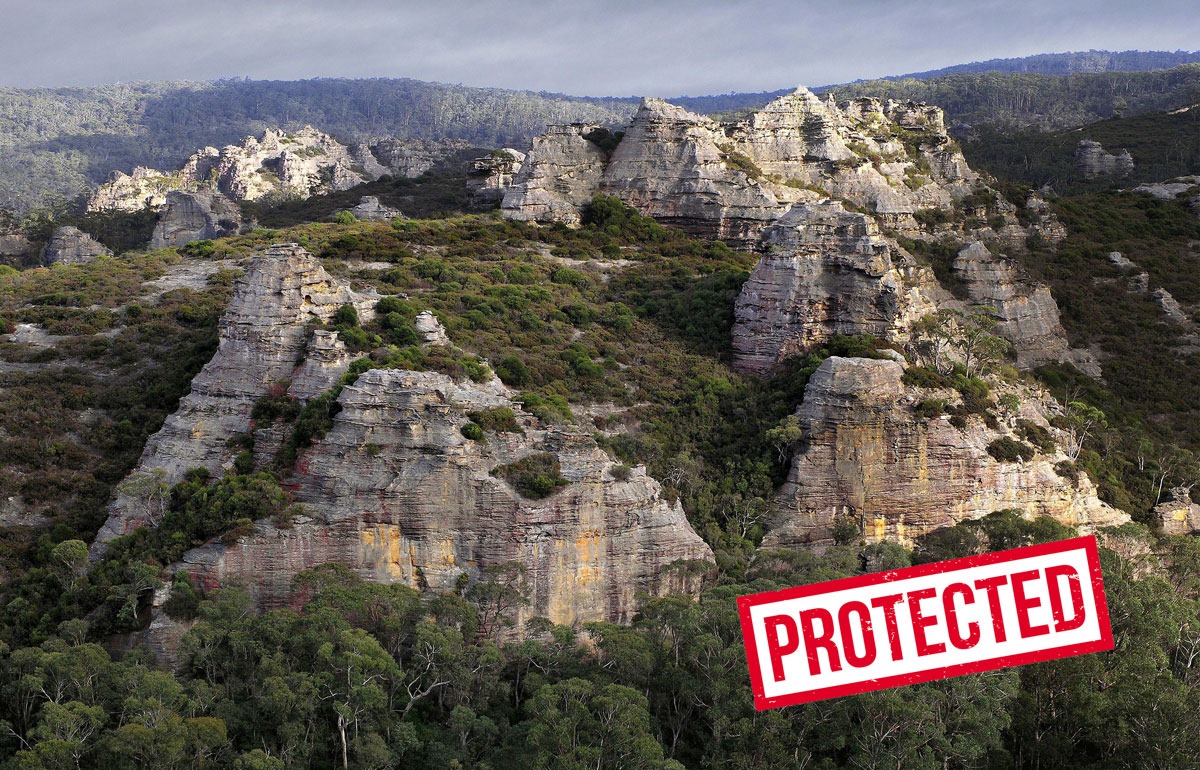
Keith Muir, former Colong Foundation for Wilderness Executive Director, said:
“After what must be the longest protected area campaign in history, the Colong Foundation welcomes the new Gardens of Stone State Conservation Area of over 30,000 hectares which positions Lithgow as the gateway to the Gardens of Stone region.
“The new reserve ranks in the top 20 of most floristically diverse of all State Forests, National Parks and Reserves in NSW, just behind Ku-ring-gai Chase National Park, but outranks them all on geodiversity diversity.
“The funding provided will permit the establishment of a world-class tourism and conservation reserve protecting and presenting an astounding array of heritage values. It will improve the protection of internationally significant pagoda landscapes and remaining rare upland swamps. The area includes 84 threatened plant and animal species, such as the Giant Dragonfly, and 16 rare and threatened communities.
“The untapped tourism value of Lithgow’s Gardens of Stone backyard lies in the diversity and rarity of its scenery and native flora, and in its Aboriginal cultural heritage. These values will be protected and enjoyed by thousands of people.
“Lithgow will become the new Katoomba. Katoomba was once a coal mining town, having successfully transitioned to a tourism based economy in the 1920s.
“It is testament to the persistent community campaign from the Colong Foundation for Wilderness, Blue Mountains Conservation Society and the Lithgow Environment Group that this announcement has happened today.
“While this is a great outcome for nature, the threat to the World Heritage Area from the proposed raising of the Warragamba Dam wall casts a long shadow over today’s wonderful announcement.”
Key Facts
The new reserves will be established by legislation to be introduced in November and will cover 31,500 hectares including:
- Gardens of Stone State Conservation Area (total 28,944 ha) created by the transfer of Newnes, Ben Bullen and Wolgan State forests and Crown land
- additions to Gardens of Stone National Park (342 ha) from Crown land
- additions to Wollemi National Park (2259 ha) from Newnes State Forest.
An iconic great walk – set to become one of the world's great long distance walks – will extend from the Wollemi to the Gardens of Stone.
- this 6-day (five-night) walk will feature incredible views across the Wollemi wilderness, allowing visitors to explore ancient pagoda formations and visit one of the world's great birding locations, the Capertee Valley, while enjoying comfortable accommodation and purpose-built eco-cabins.
The new reserves are expected to attract an estimated 200,000+ additional visitors per annum, creating more than 190 jobs in the Lithgow region.
The new reserve contains a diversity of ecosystems and high species richness, and is characterised by striking geological features such as the scenically spectacular 'pagoda country' which represents internationally significant geoheritage.
In addition:
- the Newnes Plateau is the highest elevation sandstone plateau in the Blue Mountains and contains species such as the Wolgan Snow Gum (Eucalpytus gregsoniana) that is not found in the existing Blue Mountains reserves
- the landscape is characterised by cliffs, steep gullies, slot canyons and grassy woodlands
- threatened ecological communities are present, including significant areas of elevated swamps listed under both Federal and State legislation, as well as box woodland and tableland grassy forest that has been heavily cleared elsewhere
- a number of rare and threatened species are found on the reserves including koalas, spotted-tailed quolls, regent honeyeaters and the Blue Mountains water skink.
The new reserve has exceptional cultural value, with many recorded sites including artefacts, art engravings and pigmentations, carved and scarred trees, stone arrangements and grinding grooves. It encompasses the Mayinygu Marragu Aboriginal Place, a place of special meaning to Wiradjuri people and highly valued by the wider Aboriginal community which contains Aboriginal rock shelters with painted art and is a teaching and occupation site.
This proposal will also allow responsible applications to extend the life of current underground coal mines such as Angus Place, while ensuring additional protections for the environment and unlocking new tourism opportunities.
Key Piece Of Western Sydney Conservation Puzzle To Be Protected
A major agreement between the NSW Government and the Deerubbin Local Aboriginal Land Council (DLALC) will support the development of land managed by DLALC in Western Sydney, while protecting 1100 hectares of important woodlands on the Cumberland Plain.
Minister for Planning and Public Spaces Rob Stokes said preparation of the biodiversity assessment and approvals for Deerubbin's Penrith Structure Plan will be fast-tracked, providing economic opportunities for Aboriginal people while securing more land to be protected under the NSW Government's Cumberland Plain Conservation Plan.
"The Cumberland Plain Conservation Plan is our greatest defence for the ancient woodlands of Western Sydney. When certified, this plan will permanently protect many important threatened native plants and animals, while giving the Deerubbin Local Aboriginal Land Council certainty to plan its future," Mr Stokes said.
Biodiversity certification of DLAC's Penrith Structure Plan has been declared as 'strategic' by the Minister for Energy and Environment. Minister for Western Sydney Stuart Ayres said this declaration is the first of its kind and demonstrates this Government's commitment to support Local Aboriginal Land Councils and work collaboratively to deliver the best outcomes for our growing communities.
"The DLALC is a significant landholder in Western Sydney and cutting the green tape to enhance job creation and opportunity for both Aboriginal and non-Aboriginal people is a huge step forward. This is practical reconciliation in action," Mr Ayres said.
Environment Minister Matt Kean said the proposed conservation measures include protecting around 1100 hectares of native vegetation and is only made possible by the opportunity to partner with DLALC.
"The strategic declaration of the Penrith Structure Plan will deliver significant conservation outcomes and enable us to protect one of the largest remnant areas of intact vegetation on the Cumberland Plain by expanding Agnes Banks Nature Reserve and Castlereagh Nature Reserve while enabling DLALC to realise the socio-economic opportunities of their lands," Mr Kean said.
Chairperson of the DLALC Athol Smith said: "The Penrith Structure Plan represents a nationally significant partnership between the NSW Government and a Local Aboriginal Land Council, delivering benefits for the Aboriginal and non-Aboriginal communities of Western Sydney."
Chief Executive Officer Emeritus of the DLALC Kevin Cavanagh said: "It is historic that the DLALC is willing to provide 1,100 hectares of land in Western Sydney for biodiversity conservation – the scale of this gift to the citizens of NSW cannot be underestimated."
The Department of Planning, Industry and Environment is working with DLALC and an independent accredited assessor to prepare the relevant statutory and public consultation documents.
For more information visit the Cumberland Plain Conservation Plan webpage.
Ben Boyd National Park To Be Renamed
Ben Boyd National Park on NSW's far south coast will be renamed in the language of Traditional Custodians recognising the Aboriginal cultural heritage of the area.
Environment Minister Matt Kean said the decision follows requests from Aboriginal communities to rename the park due to Ben Boyd's association with 'blackbirding', a practice that involved the coercion of people through deception or kidnapping to work as slaves or poorly paid labourers.
"It is time to acknowledge the real history of Ben Boyd and remove his name from the national park that continues to hold enormous cultural significance for Aboriginal people," Mr Kean said.
"It is clear from the expert historical analysis, that Ben Boyd's association with 'blackbirding' should not be reflected or celebrated in any way in our national parks."
"There are many people from NSW's early history who are worth remembering and celebrating but it is clear from this historical analysis that Ben Boyd is not one of them."
"By renaming the park, we not only celebrate ancient Aboriginal culture but also recognise its importance to Aboriginal people in recent history."
The next step is to work with Elders and Aboriginal community representatives to identify a new name for the park. Consultation on a new name is expected to start in the coming weeks.
Last year National Parks and Wildlife Service responded to calls to rename Ben Boyd National Park by engaging an independent historian, Dr Mark Dunn, to provide a report on the history of Ben Boyd on the NSW South Coast.
Dr Dunn's report confirms Ben Boyd's involvement in 'blackbirding', was viewed by many at the time as a form of slavery. Renaming the park follows the NPWS Parks Name Policy where new park names should come from Aboriginal communities.
More information can be found on the Renaming of Ben Boyd National Park and Benjamin Boyd’s role in Blackbirding.
New Report Shows Australia Failing To Meet Plastic Reduction Targets
November 18, 2021
Australia’s leading ocean conservation organisation has expressed alarm at a new report showing that Australia is not going to meet its 2025 plastic packaging targets.
A new progress report from the Australian Packaging Covenant Organisation (APCO) has shown that Australia’s recycling of plastic packaging has flatlined, with only 16% of plastic recycled in 2019-20, down from 18% in the previous year.
Of 1.1 million tonnes of plastic packaging placed on the market that year, that represents only 179,000 tonnes recovered.
Alarmingly, only 60% of plastic packaging was found to be easily recyclable. Products with recycled plastic content also remain low, with post-consumer recycled content accounting for only 3% of plastic packaging on the market.
Australian Marine Conservation Society (AMCS) plastics expert Shane Cucow said the report should be a sharp wake-up call for government and business.
“We’ve seen a lot of companies talking about sustainability, but this report shows that collectively we are still asleep at the wheel,” he said.
“We’ve been encouraged by moves to ban key single-use plastics and investments to build new recycling infrastructure, but it is still too little, too slowly when it comes to plastic packaging.
“One thing is abundantly clear. If we keep on the way we are, we’ll never make it past the halfway point as the tidal wave of plastic continues to fill up our oceans and our landfills.
“The report showed that even with currently planned recycling upgrades occurring around Australia, we will still only be able to recycle 36% of plastics annually – far short of Australia’s target to recycle or compost 70% of plastic packaging.”
Mr Cucow said that it was time for the Australian government to take decisive action.
“The evidence is clear, voluntary targets are not working. Without real incentives and clear penalties, it is too easy for companies to put this in the too hard basket.
“There’s simply not enough demand for recycled plastic because virgin plastic is cheaper and easier to obtain. It’s time for the Australian government to level the playing field with a levy on virgin plastic and mandated targets for recycled content.”
In particular, the report highlighted that without a sharp increase in the recycling rates for soft plastics like bread bags, chip packets and other food packaging, Australia would not meet recycling targets.
“Only 4% of soft plastics are currently getting recycled in Australia, yet soft plastics are the single most lethal consumer plastic for ocean wildlife like whales and turtles,” added Mr Cucow.
“We need a dramatic increase in our capacity to recover and recycle soft plastics, introducing measures such as kerbside collection of soft plastics and compostables for every household.
“It’s also high time all the big product manufacturers took responsibility for the environmental devastation their packaging is causing, and took more decisive action to cut their plastic packaging in real terms.
“It’s not good enough to just whack a recycling label on your soft plastic packaging and call it a day, when Australia is drowning in a sea of plastic.”
The APCO Collective Impact Report is available here. Supporting materials are available on the APCO website https://apco.org.au/
Australia’s 2025 National Packaging Targets set voluntary targets for packaging recovery and design:
- 100% of packaging is reusable, recyclable or compostable
- 70% of plastic packaging is reusable, recyclable or composted
- 50% average recycled content is included in packaging
- Phase out problematic and unnecessary single-use plastic packaging
Western Sydney Company To Pay $88,000 For Purple Water Incident
November 18, 2021
 An ink manufacturer responsible for polluting a Western Sydney river with purple dye will pay $88,000 towards environmental and clean-up programs and the NSW Environment Protection Authority’s (EPA) costs of investigating the incident. The payment is part of an Enforceable Undertaking agreed with the EPA.
An ink manufacturer responsible for polluting a Western Sydney river with purple dye will pay $88,000 towards environmental and clean-up programs and the NSW Environment Protection Authority’s (EPA) costs of investigating the incident. The payment is part of an Enforceable Undertaking agreed with the EPA.
In April 2020, DIC Australia Pty Ltd started to produce a purple batch of dye at its factory in Auburn NSW. When water containing the purple dye later entered the site’s stormwater system unseen, DIC Australia failed to detect and remove it. The water containing purple dye then overflowed into an outlet pipe running directly to Duck River.
Pumps in the site’s stormwater retention pit were also turned on, which discharged more water containing purple dye into the river.
EPA Executive Director Regulatory Operations Steve Beaman said the incident was reported by concerned members of the public who noticed Duck River had turned a deep shade of purple on 11 June 2020.
“Duck River is a southern tributary of the Parramatta River,” Mr Beaman said.
“This incident had the potential to cause harm to the animals and plants living in Duck River, and the wider catchment. Thankfully on this occasion no actual harm was observed, and the purple dye dissipated within a few days.”
Mr Beaman said DIC Australia should have protected the local waterway by removing the contaminated water from their stormwater system to ensure it didn’t reach the river.
As part of the Enforceable Undertaking, DIC Australia will train all staff about their environmental obligations, engage an independent expert to audit the site’s stormwater and liquid waste management systems and then implement the expert’s recommendations.
The company will also pay $5,000 to Clean Up Australia and $25,000 to the NSW Environmental Trust for general environmental work. DIC Australia must also pay $58,000 to the EPA for the legal and investigation costs it incurred in relation to the incident.
“All businesses must ensure that they have the right plans in place to avoid pollution, which can cause harm to communities and the environment, as well as cost them in fines,” Mr Beaman said.
“Preventing these types of incidents not only protects the environment but makes good business sense.”
Enforceable Undertakings are one of several tools the EPA can use to achieve environmental compliance. They are enforceable by the Land and Environment Court.
DIC Australia also complied with a clean-up notice issued by the EPA directing it to clean the stormwater pits at the site to prevent further purple dye reaching the river.
For more information about the EPA’s regulatory tools, see the EPA Compliance Policy.
BASIX Higher Standards: Feedback Open
The NSW Government are improving BASIX standards to build more comfortable homes, cut energy costs and contribute to our target of net zero homes by 2050.
This is part of the Trajectory for Low Energy Buildings, a national plan that aims to achieve zero energy and carbon-ready buildings. The plan proposes increases to the energy efficiency provisions in the National Construction Code (NCC) for residential buildings from 2022.
What do the proposed new standards mean:
- Cheaper energy bills. You’ll use less electricity so your bills will be cheaper – saving as much as $980 a year on energy bills.
- More comfortable homes. Your home will be naturally cooler in summer, warmer in winter, which means you won’t be turning the heater or air conditioner on as often
- Fewer carbon emissions. This contributes towards our goal of net zero homes by 2050
The proposed higher standards
Te NSW Department of Planning welcome feedback on the proposed increases to BASIX standards. The proposed changes can be found in the Proposed BASIX Higher Standards document. This document shows a map of the climate zones in NSW.
The proposed thermal performance and energy standards vary according to climate zones.
The tables show the proposed maximum allowable thermal loads and the energy standards for the climate zones.
Technical information about the changes
The proposed BASIX thermal performance and energy standards vary depending on;
- location based on climate
- building type for apartment buildings
Standards for most new residential buildings are proposed to increase across NSW from late 2022. Exceptions include apartment buildings up to 5 storeys and properties in the NSW North Coast climate zone.
The North Coast climate zones where standards won’t be changed are climate zones 9, 10 and 11 defined by the Nationwide House Energy Rating Scheme (NatHERS). They are predominantly on the NSW North Coast but also include Port Stephens and Maitland.
Other documents
Proposed BASIX Higher Standards
Cost Benefit Analysis report
BASIX Higher standards FAQ
Have your say
The government welcome your feedback on the proposed BASIX higher standards from Wednesday, 17 November until January 17 2022. The BASIX higher standards exhibition aligns with the Design and Place SEPP exhibition.
The exhibitions will close on the same day, currently expected in January 2022.
Visit: www.planningportal.nsw.gov.au/draftplans/exhibition/basix-higher-standards
Plans Revealed For Riverside Park At Drummoyne
November 17, 2021
Plans have been revealed for waterfront Crown land reserve at Drummoyne.
The City of Canada Bay has released plans for Howley Park East Reserve with the assistance of $1.5 million from the NSW Government’s Crown Land Open Space Activation Program. This program supports partnerships with Councils to activate and improve Crown land for community use.
The eastern side of Howley Park will be transformed, with the sandstone and beach being covered over with cement and boardwalks.
Works will also include a new turfed terrace where visitors can picnic and relax, foreshore access to the beach, a new retaining wall, access ramp, landscaping and bush regeneration.
A small clearing for passive recreation will be located between the road and beach. Beach access will allow for small personal watercraft and passive recreation (see GIF embedded below of concept plan).
City of Canada Bay General Manager John Clark said he was thrilled to secure the future of the site for the community.
“Howley Park East has served as a thoroughfare to the marina but these works will now make it a recreation destination,” Mr Clark said.
“I’m excited to now work alongside the local community on the plan for this space. We’ve developed a vision but the design will ultimately be shaped by residents after extensive consultation.
“By securing funding and the ongoing management of the recreational element of the reserve, we have been able to optimise this open space and create a new recreation area for our residents.”
Consultation on the plans is set to open in early 2022. Detailed designs will be developed before the project goes out to tender. The new and improved Howley Park East is scheduled to be complete in late 2022.
To view the concept plans and read more about the project, visit Howley Park East.

Draft Marine Park Management Plan Released
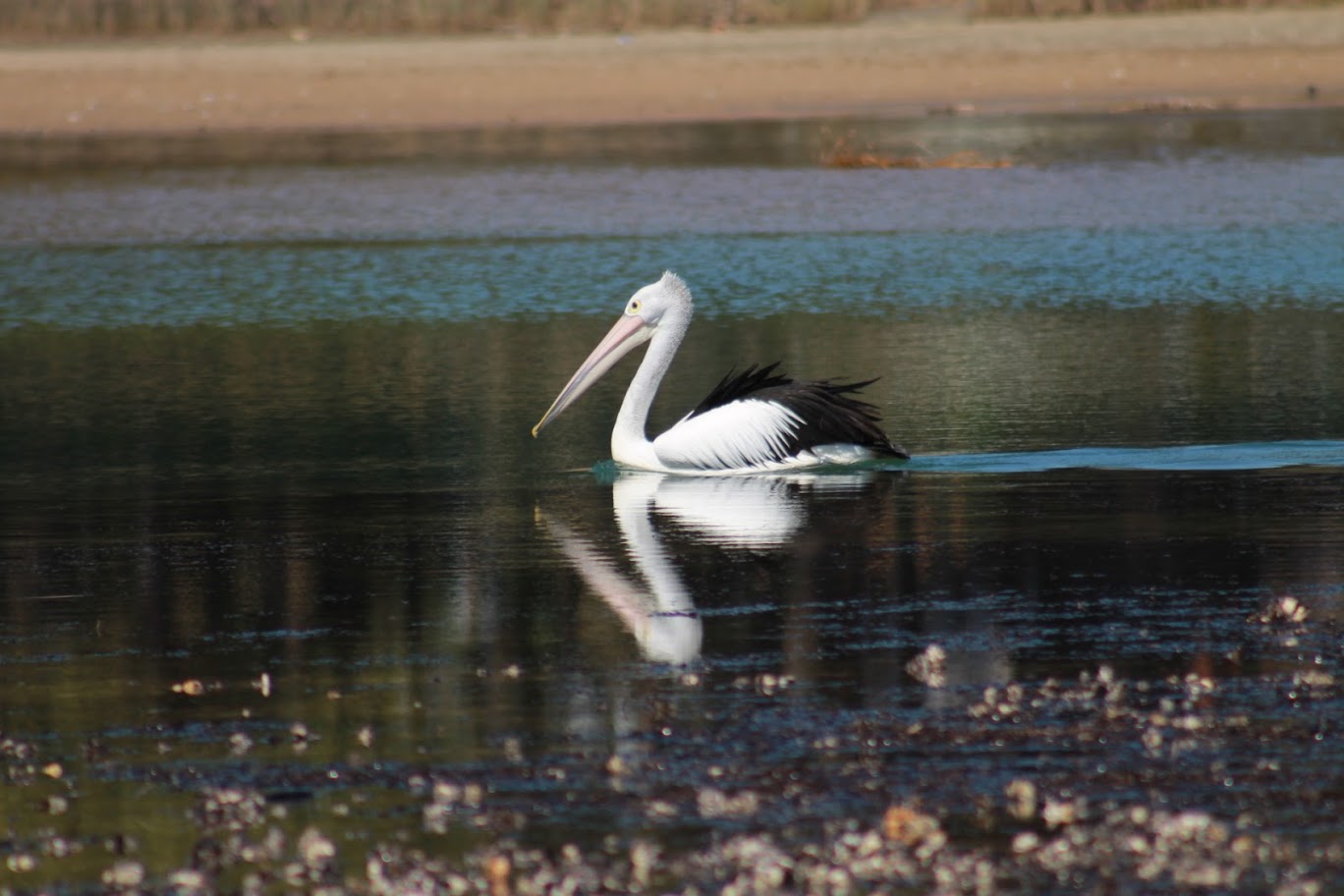
NAB’s Greenwashing Will Dump Dirty Waste On Communities Fighting Fracking And Gas
Lock the Gate Alliance is calling on NAB to explicitly rule out financing to open up new unconventional oil and gas basins across the country, after the bank’s newly released oil and gas lending policy was labelled greenwashing.
The policy leaves a giant loophole for the bank to fund projects it determines are needed for “national energy security”, and it also has a ‘cap’ that is greater than current lending - so the NAB policy announced today is actually to increase lending to oil and gas.
Lock the Gate Alliance National Coordinator Carmel Flint called on NAB to explicitly rule out financing for opening up unconventional oil and gas basins at Narrabri in NSW, the Lake Eyre Basin in Queensland, the NT’s Beetaloo sub-basin, and WA’s Kimberley region.
“NAB’s new policy is so vague, we doubt it will do anything to reduce the bank’s willingness to finance polluting and destructive greenfield gas and oil developments.
“They have left a huge loophole which allows them to fund new (greenfield) developments if companies claim the oil and gas is needed to meet domestic energy needs, despite companies regularly claiming that whilst sending most gas offshore.
“That’s why we’re calling on NAB to explicitly rule out funding these four new basins.
“Australia is already awash with gas which we are shipping overseas - we don’t need any new development here, regardless of what gas companies claim it will be used for.”
Mullaley farmer Margaret Fleck called on NAB chief executive Ross McEwan to visit the Namoi region to witness first hand the level of community opposition to Santos’ Narrabri gasfield.
“NAB’s new oil and gas policy was likely created in the high rise boardrooms of Sydney and Melbourne, a long way from the communities who will suffer as a result of new oil and gasfields.
“The Australian Bureau of Agricultural Resources, Economics and Sciences demonstrated earlier this year how the impacts of climate change are costing the average farmer $30,000 a year. NAB’s new policy will likely lead to worsening climate impacts, and a greater hit to the average farmers’ hip pocket.
“I invite Mr McEwan to visit Narrabri and the surrounding region and meet with the farmers who fear Santos’ coal seam gasfield will drain and contaminate the groundwater they rely on, and to meet with the Traditional Owners who fear the damage the gasfield will inflict on the sacred Pilliga forest.
“Maybe then NAB’s oil and gas policy will be more than just greenwashing.”
A lab-stage mRNA vaccine targeting ticks may offer protection against Lyme and other tick-borne diseases
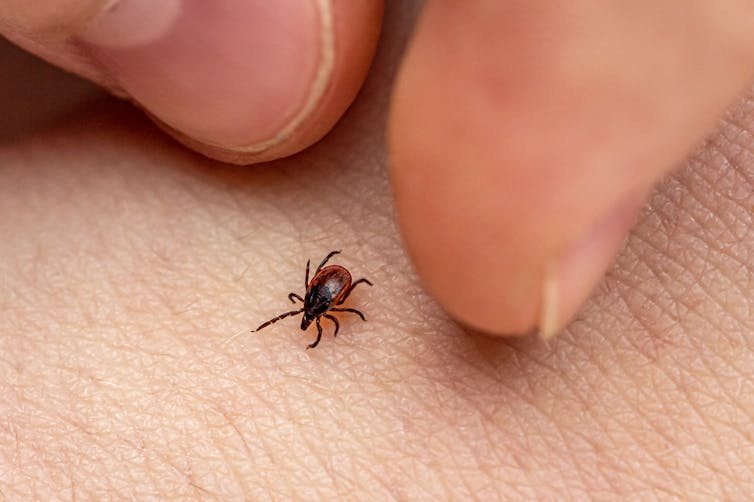
The Research Brief is a short take about interesting academic work.
The Big Idea
A new laboratory-stage mRNA vaccine that teaches the immune system to recognize the saliva from tick bites could prevent these bugs from feeding on and transmitting tick-borne diseases to people, according to a recent study my colleagues and I conducted in the Fikrig Lab at the Yale School of Medicine.
Some animals repeatedly exposed to tick bites are eventually able to develop resistance to tick feeding, where the ticks either detach soon after biting or cause skin redness that alerts the host to remove them. Scientists have observed this tick immunity in several animals that don’t typically serve as hosts to ticks, including guinea pigs, rabbits and cows.
In laboratory settings, guinea pigs bitten 2-3 times by ticks are able to develop robust immunity against them. While there have not been any formal studies on tick immunity in humans, people who have been repeatedly exposed to ticks can get itchy skin after getting bitten, a symptom that may be associated with tick immunity.
Our lab was curious if we could induce tick immunity without tick bites. So we developed an mRNA vaccine called 19ISP that teaches cells to recognize 19 selected proteins present in the spit that Ixodes scapularis, also known as the deer or black-legged tick, leaves on the skin during a bite. Instead of targeting proteins on the invading pathogen – like the spikes on the outside of the coronavirus – our vaccine targets proteins naturally found in the tick’s saliva.
We found that guinea pigs vaccinated with 19ISP developed skin redness after they were bitten, indicating that their immune system was activated and recruited inflammatory cells to the site to fight off infection. Like other animals that developed tick immunity after repeated bites, the ticks were unable to feed on the guinea pigs and quickly detached. None of the vaccinated guinea pigs tested positive for Borrelia burgdorferi, the bacteria that causes Lyme disease. Conversely, almost half of the non-vaccinated guinea pigs tested positive for Borrelia infection.
Why It Matters
Tick-borne diseases, including Lyme disease, are rising in North America and Europe, with almost 40,000 annual reported cases in the U.S. Ticks aren’t just a cause of trouble for wilderness hikers – they also pose a danger to farm workers and anyone outdoors. Beyond Lyme disease, ticks also transmit several other pathogens that can cause serious and potentially life-threatening conditions.

What’s unique about the 19ISP mRNA vaccine is that instead of directly targeting the pathogen that causes the disease like traditional vaccines, 19ISP was able to stimulate resistance to the carrier of the disease, ticks, and prevent them from transmitting the pathogen in the first place. Our study also suggests that this form of tick-based vaccination – teaching the body to rapidly recognize and react to being bitten by a tick – may be sufficient to prevent infection.
What Still Isn’t Known
While guinea pigs were able to develop tick immunity, we’ve found that animals like mice do not. We plan to test this mRNA vaccine model in other animals, such as rabbits, to better understand how tick immunity varies in different tick hosts. We also plan to develop vaccines for other tick-borne pathogens and test for whether immunity extends to different tick species as well.
Our hope is that vector-based mRNA vaccines targeting the disease carrier can be applied to other vector-borne diseases. However, the feeding strategies of each disease vector is different – tick bites are not the same as mosquito bites, for instance. Because the way disease-carriers transmit pathogens may be different, vaccines may need to be modified for each vector.
What’s Next
We plan on conducting studies on people who already have Lyme disease or who are repeatedly exposed to ticks to see if they have developed antibodies that recognize the proteins in 19ISP. This will further clarify how tick immunity works, and may eventually lead to clinical trials testing these vaccines in people.
[Climate change, AI, vaccines, black holes and much more. Get The Conversation’s best science and health coverage.]![]()
Andaleeb Sajid, Staff Scientist, National Institutes of Health
This article is republished from The Conversation under a Creative Commons license. Read the original article.
Climate change: how elephants help pump planet-warming carbon underground

Imagine you’re in a hot air balloon flying over an African savanna in the late growing season. Below, herds of elephants, zebras, wildebeests and rhinos roam a mosaic landscape dotted with lonesome trees and daubs of woodland on a canvas of yellow-brown grass. The hungry and rowdy herbivores are eating and trampling the vegetation that stores carbon and keeps it from heating the atmosphere.
You’d be forgiven for thinking that their voracious appetites and blundering steps might be disturbing and releasing the carbon stored in this ecosystem in much the same way wildfires do. But, incredibly, the way herbivores disturb the landscape actually helps it lock up more carbon in durable stores that are difficult to reach. In a new review which compiled evidence from lots of different studies, we uncovered how large herbivores could help slow climate change this way.
Forests are often evoked as the ultimate vessels for storing carbon. But carbon in the bark and leaves of trees is vulnerable to logging, pests and fires which can unleash decades of accumulated carbon in a matter of hours. Even in healthy forests, most of the carbon stored in vegetation above ground is decomposed and recycled to the atmosphere as greenhouse gas in less than a century.

Meanwhile, the soil beneath savannas and grasslands where trees are sparse but herbivores are abundant can guard carbon for thousands and even tens of thousands of years in hard-to-reach underground pools. So how is this possible?
Research from 2009 showed how wildebeests returning to the Serengeti savanna of east Africa after a virus tore through their populations led to fewer catastrophic wildfires. Because the wildebeests trampled and ate the vegetation that had been fuelling the fires in their absence, their return in the 1960s allowed the plants to gradually reestablish and recover their pre-epidemic abundance, along with the carbon the landscape’s soil was storing.
This may sound counter-intuitive, but large herbivores and seasonal fires are natural elements of grassland ecosystems. Without wildebeests keeping on top of all that fuel, small fires turn into catastrophic blazes and consume everything.
But does it really matter for the climate whether herbivores or fires consume the vegetation? If you assume that 100% of the carbon in vegetation is released to the atmosphere as greenhouse gasses from fires or elephant digestion, then it shouldn’t.
But this isn’t what really happens. For one thing, the burned carbon that remains in the soil after a fire is resistant to decomposition by microbes, and often called black carbon.
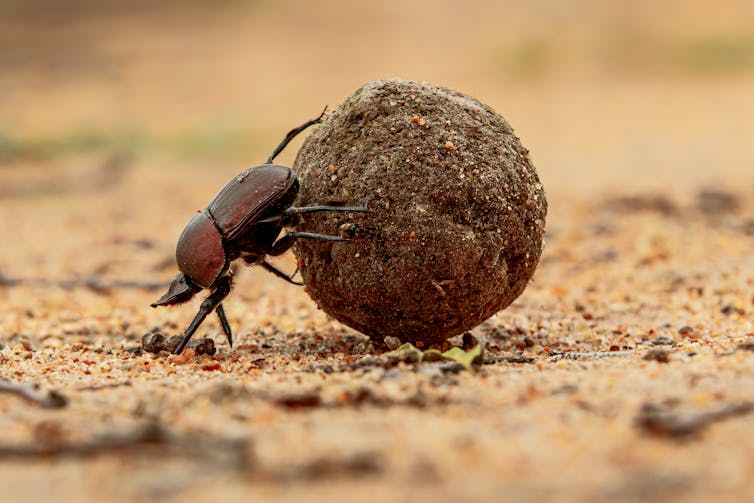
Meanwhile, up to half of the plant material eaten by large herbivores is excreted as dung and urine, which tends to be easier for decomposers in the soil (such as beetles, earthworms, fungi and bacteria) to break down compared to plant litter like dead leaves and fallen logs. Scientists once assumed that plant material eaten by microbes or animals was lost from the soil. But recent discoveries suggest this picture is far too simple.
While some of what’s eaten by decomposers is released as CO₂ to the atmosphere, most of it enters persistent soil pools of carbon. An effective way of forming long-term stores of carbon underground then is to feed the soil with easily decomposable organic material.
Large animals seem adept at reorganising where ecosystems store carbon, directing a larger fraction towards persistent and stable reservoirs underground. This shows how valuable intact wildlife communities can be, and should urge us to protect the few remaining herbivore-rich ecosystems on Earth, such as the African savanna. We may restore so much more by restoring nature’s four-legged ecosystem engineers in the places they have been lost.![]()
Jeppe Aagaard Kristensen, Carlsberg Foundation Visiting Postdoctoral Fellow at Oxford Ecosystems Lab, University of Oxford
This article is republished from The Conversation under a Creative Commons license. Read the original article.
How an ‘atmospheric river’ drenched British Columbia and led to floods and mudslides
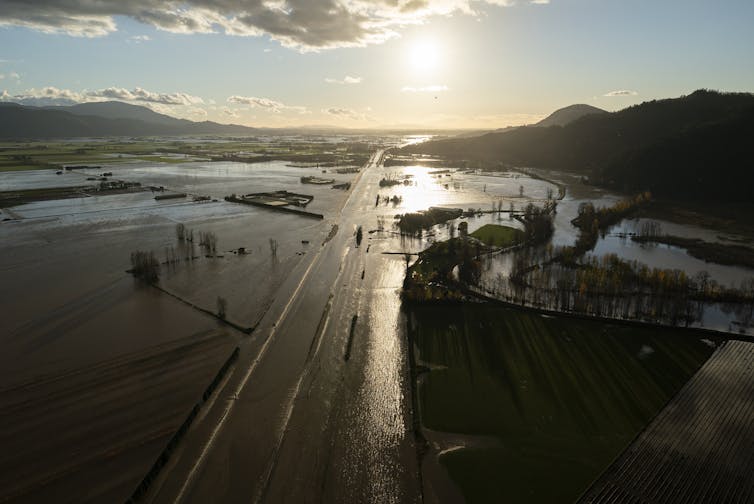
The West Coast of Canada is known for its wet autumn weather, but the storm that British Columbia’s Fraser Valley experienced over the weekend was one for the record books.
A weather system called an “atmospheric river” flowed across the southwest corner of the province and, over a period of two days, brought strong winds and near-record amounts of rain, which caused widespread flooding and landslides. So far, one person has died.
Hope, Merritt and Princeton, which were particularly hard hit, received 100-200 millimetres (or more) of rainfall. And all of the highways connecting Vancouver to the rest of the province were closed due to washouts and landslides, isolating the city from the rest of Canada, at least by road, with significant economic impacts.
What Is An Atmospheric River?
An atmospheric river is a band of warm, moisture-laden air many hundreds of kilometres long and hundreds of kilometres wide that borders a large cyclonic low-pressure system.
The term has been applied to bands of moisture-associated weather systems that move inland from the Pacific Ocean. An atmospheric river can reach the coast anywhere between southeast Alaska and Northern California.
Because of the large amount of moisture conveyed in these weather systems, the term has become a metaphor for a terrestrial river. However, atmospheric rivers are not carried in a channel like a real river and can dump prodigious amounts of rain over large areas.
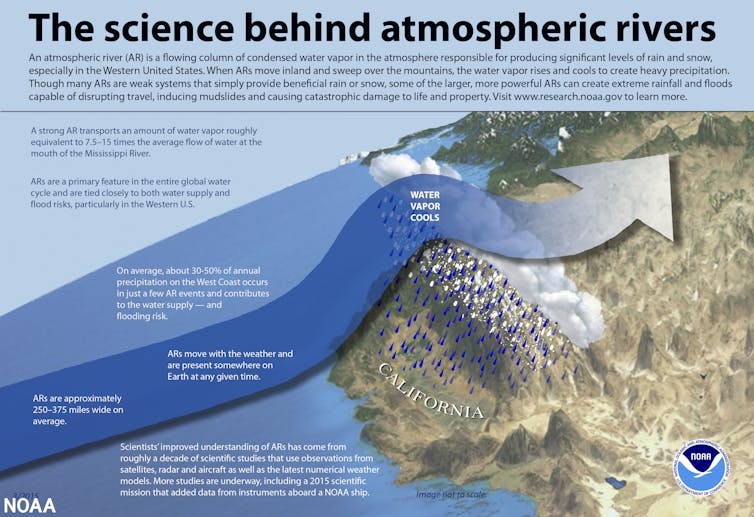
Was It A Record-Breaking Rainfall?
The weekend storm was noteworthy for both its duration and its intensity. It rained continuously over much of the storm track for more than 24 hours and the rate was higher than normal autumn rains.
In both cases, rapid runoff exceeded the carrying capacity of streams and rivers, causing them to spill out onto floodplains. In addition, flat areas like the Sumas Prairie area between Abbotsford and Chilliwack had already been saturated with October and early November rainfall, were unable to drain away the water and were consequently flooded.
Furthermore, snow at high elevations melted under the warm rainfall, exacerbating the flooding. Rainfall on Nov. 14 set records for many places in the region. For example, Abbotsford recorded 100 millimetres of rain that day, exceeding the previous record of 49 millimetres set in 1998. Hope had 174 millimetres, five times the amount in the record year of 2018.
Did Summer Wildfires Make The Situation Worse?
B.C. had its second worst wildfire summer season in 2021, with more than 1,600 fires charring nearly 8,700 square kilometers, mainly in the southern part of the province. Only 2017 saw more forest lands burned.
Soils in forested landscapes are hydrophobic after severe fires — they repel water. Super-heated air during a wildfire disperses waxy compounds found in the uppermost forest litter layer. The compounds coat mineral grains in the underlying soil, making it hydrophobic. The water-repelling layer is typically found at or a few centimetres below the ground surface and is commonly covered by a layer of burned soil or ash.
Many areas burned during the 2021 wildfires, such as around Merritt, were deluged by rain the weekend of Nov. 13. It is possible that runoff from these burned grounds was greater and more rapid because of the hydrophobicity of the soil.
Is This Related To Climate Change?
Scientists are generally reluctant to attribute single extreme weather events to climate change, but the exceptional events of recent years are shifting opinion.
Examples of such exceptional events include flooding in western Germany and eastern Belgium and in Henan Province China, both in July 2021; extreme heat and wildfires in Siberia in 2020 and 2021; and the “heat dome” over western North America at the end of June 2021.

These events are so far “off scale” in comparison to past historic extreme events that climate modellers assert that they would not have happened or would not have been as severe were it not for climate change.
Such events are consistent with predictions made by atmospheric scientists that weather extremes will become more frequent and more severe as Earth’s climate continues to warm.![]()
John J Clague, Emeritus Professor, Earth Sciences, Simon Fraser University
This article is republished from The Conversation under a Creative Commons license. Read the original article.
I chose the electricity retailer offering the best deal for my home. That’s not what I got

Households in most of Australia have been able to choose between electricity retailers for more than a decade. The main reason is to reduce their bills.
But past research by the Victoria Energy Policy Centre (at Victoria University) has found only marginal benefits in switching retailers. Our study of more than 48,000 bills from Victorian households in 2018, for example, found households typically saved less than A$50 a year by switching energy providers.
Has anything improved since then? A few weeks ago I decided to test the market for my own household supply. To guide my choice, I evaluated 357 competing offers from 30 retailers using my half-hourly consumption and solar export data for the last year.
The 357 offers came from the Victorian government’s price comparison website, the only comprehensive source of all commonly available offers. After having found the deal I wanted, it was a painless and quick online process to switch to the new retailer.
Two weeks later I checked what had actually happened.
I discovered my new retailer had not switched me to its cheapest offer, but to one of its most expensive. I estimate I’ll still save about $143 for the year. But I would have saved about $100 more if the company had put me on its cheapest advertised offer (which, after all, was the reason I chose this retailer).
These numbers might not be large, but I have a small bill because I have solar panels and consume much less electricity than typical customers. For the typical customer, the differences would be bigger.
I have asked my new retailer to explain, but am yet to receive a reply.
How I Worked Out My (Lack Of) Savings
My electricity bill has several elements: a daily charge, two consumption rates and a solar feed-in rate. You might note such elements in the offer you choose and then compare them to the offer the retailer actually puts you on. But you’d need to be highly motivated with time on your hands to do so.
To do my sums I used special software to scrape and price all competing offers. This software, developed over several years and used in our previous research, is not publicly available.
The outcome of my test is broadly consistent with the findings of our previously mentioned research.
That analysis – using more than 48,000 bills voluntarily uploaded to the Victorian government’s price comparison website in 2018 – found typical households could theoretically save A$281 a year, or about 20% of their bill, by switching to the best possible advertised deal.
In reality, however, customers who switched retailers saved only A$45 a year – or about 3% of their annual bill.

I cannot be sure my recent experience is typical. But I think it likely other switchers will have had a similar experience. My study of the 357 competing offers available to me suggests many retailers seem to use “bait and switch” – or “tease and squeeze” – marketing strategies to attract new customers.
What Should Be Made Of This?
Choice can be valuable. Competition can lead to innovations – such as solar and battery packages with zero upfront payment that are now appearing in the the market. But the benefit of reforms making it easier to choose and switch between electricity retailers are not being fully realised.
The more complex the market becomes as electricity generation is progressively decentralised and electricity buyers also become sellers, the harder it becomes to assess the merits of the complicated offers from energy retailers. Or even to know if what you signed up for is what you are actually getting.
Had I known my new retailer would not switch me to its best offer (the one that attracted me in the first place), I wouldn’t have switched.
This underlines the need for governments and regulators to look at how the market is working in practice, not just in theory.
Examples of this approach are the 2017 independent review of Victoria’s electricity and gas retail markets chaired by former deputy premier John Thwaites and the Australian Competition and Consumer Commission’s 2018 inquiry into electricity affordability. But these are exceptions.
The devil lies in the detail of how customers search for better offers and then switch to retailers in pursuit of those better offers. Regulations to clean up possibly misleading advertising and “sharp” business practices should flow from that.![]()
Bruce Mountain, Director, Victoria Energy Policy Centre, Victoria University
This article is republished from The Conversation under a Creative Commons license. Read the original article.
Antarctic bacteria live on air and make their own water using hydrogen as fuel
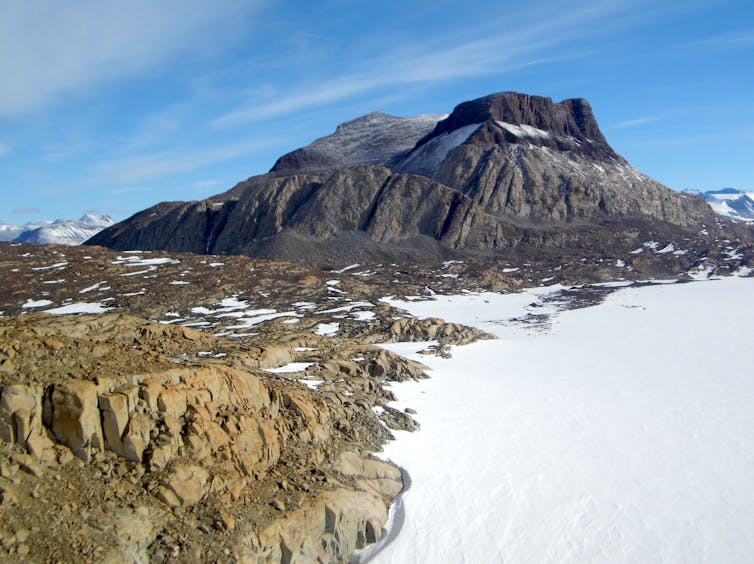
Humans have only recently begun to think about using hydrogen as a source of energy, but bacteria in Antarctica have been doing it for a billion years.
We studied 451 different kinds of bacteria from frozen soils in East Antarctica and found most of them live by using hydrogen from the air as a fuel. Through genetic analysis, we also found these bacteria diverged from their cousins in other continents approximately a billion years ago.
These incredible microorganisms come from ice-free desert soils north of the Mackay Glacier in East Antarctica. Few higher plants or animals can prosper in this environment, where there is little available water, temperatures are below zero, and the polar winters are pitch-black.
Despite the harsh conditions, microorganisms thrive. Hundreds of bacterial species and millions of cells can be found in a single gram of soil, making for a unique and diverse ecosystem.
How do microbial communities survive in such punishing surroundings?
A Dependable Alternative To Photosynthesis
We discovered more than a quarter of these Antarctic soil bacteria create an enzyme called RuBisCO, which is what lets plants use sunlight to capture carbon dioxide from air and convert it into biomass. This process, photosynthesis, generates most of the organic carbon on Earth.
However, we found more than 99% of the RuBisCO-containing bacteria were unable to capture sunlight. Instead, they perform a process called chemosynthesis.
Rather than relying on sunlight to power the conversion of carbon dioxide into biomass, they use inorganic compounds such as the gases hydrogen, methane, and carbon monoxide.
Living On Air
Where do the bacteria find these energy-rich compounds? Believe it or not, the most reliable source is the air!
Air contains high levels of nitrogen, oxygen and carbon dioxide, but also trace amounts of the energy sources hydrogen, methane, and carbon monoxide.
They are only present in air in very low concentrations, but there is so much air it provides a virtually unlimited supply of these molecules for organisms that can use them.
And many can. Around 1% of Antarctic soil bacteria can use methane, and some 30% can use carbon monoxide.
More remarkably, our research suggests that 90% of Antarctic soil bacteria may scavenge hydrogen from the air.
The bacteria gain energy from hydrogen, methane and carbon by combining them with oxygen in a chemical process that is like a very slow kind of burning.
Our experiments showed the bacteria consume atmospheric hydrogen even at temperatures of -20°C, and they can consume enough to cover all their energy requirements.
What’s more, the hydrogen can power chemosynthesis, which may provide enough organic carbon to sustain the entire community. Other bacteria can access this carbon by “eating” their hydrogen-powered neighbours or the carbon-rich ooze they produce.
Water From Thin Air
When you burn hydrogen, or when the bacteria harvest energy from it, the only by-product is water.
Making water is an important bonus for Antarctic bacteria. They live in a hyper-arid desert, where water is unavailable because the surrounding ice is almost permanently frozen and any moisture in the soil is rapidly sucked out by the dry, cold air.
So the ability to generate water from “thin air” may explain how these bacteria have been able to exist in this environment for millions of years. By our calculations, the rates of hydrogen-powered water production are sufficient to rehydrate an entire Antarctic cell within just two weeks.
By adopting a “hydrogen economy”, these bacteria fulfil their needs for energy, biomass, and hydration. Three birds, one stone.
Could A Hydrogen Economy Sustain Extraterrestrial Life?
The minimalist hydrogen-dependent lifestyle of Antarctic soil bacteria redefines our understanding of what is the very least required for life on Earth. It also brings new insights into the search for extraterrestrial life.
Hydrogen is the most common element in the universe, making up almost three-quarters of all matter. It is a major component of the atmosphere on some alien planets, such as HD 189733b which orbits a star 64.5 light-years from Earth.
If life were to exist on such a planet, where conditions may not be as hospitable as on much of Earth, consuming hydrogen might be the simplest and most dependable survival strategy.
“Follow the water” is the mantra for searches of extraterrestrial life. But given bacteria can literally make water from air, perhaps the key to finding life beyond Earth is to “follow the hydrogen”.![]()
Pok Man Leung, PhD candidate in Microbiology, Monash University; Chris Greening, Associate professor, microbiology, Monash University, and Steven Chown, Director, Securing Antarctica's Environmental Future, Monash University
This article is republished from The Conversation under a Creative Commons license. Read the original article.
Are you kidding, India? Your last-minute Glasgow intervention won’t relieve pressure to ditch coal

As the United Nations climate summit opened in Glasgow, India’s Prime Minister Narendra Modi had a surprise positive announcement: a big net-zero target. The world cheered at the planet’s third-largest greenhouse gas emitter getting on board with net-zero, and the move made global headlines.
Fast forward to the final tense hours of COP26, and India almost derailed the talks. It demanded a key commitment in the Glasgow agreement be watered down: that a pledge to “phase out” coal be weakened to just “phase down” the fossil fuel.
China supported India’s holdout. The controversy cast a long shadow over the Glasgow agreement, which was already shaping as too weak to keep global warming below 1.5℃ this century. The world – including India – needs to phase out coal by 2040 if that warming goal is to be met, and India’s government is kidding itself to think the Glasgow intervention will make that problem vanish.
India should not consider itself off the hook. Rather than slow the decline in coal use, India has ensured it and other coal-intensive nations, including Australia, will be under even greater global pressure to ditch coal.

A Big Coal Problem
Since 2000, coal-fired power capacity in both India and China has grown massively. At COP26, the two nations were joined in their last minute demands by other big coal users like South Africa and Nigeria, along with Venezuela, a coal exporter.
India cannot absolve itself by pointing to its goal to reach net-zero emissions by 2070. Like many other nations to adopt a net-zero goal – including Australia – India has no firm plan to get there.
Nor is India’s 2030 target strong enough. A global research organisation I help lead, Climate Action Tracker, found India can largely meet the goal with policies already in place.
India no doubt has a big coal problem, and will need substantial support to deal with it, such as finance and technology from developed nations. But it also has enormous potential for renewable energy expansion.
Analysis shows that to prevent further climate disaster and keep warming to 1.5℃, thermal coal must be phased out by 2030 in developed nations and by 2040 globally – including in India. Softening the language in the COP26 decision doesn’t change this fact.

Parallels With Australia
So where does all this leave Australia, one of the world’s largest coal exporters?
Like India, Australia also has a big coal problem and huge renewables potential. And like India, Australia firmly resisted signing up to big COP26 pledges for a faster phase-out of coal and large reductions in methane emissions by 2030.
Large methane reductions need to come from fossil fuels – namely coal mining and gas production. These are both industries our government has fought hard to protect.
To stay within the 1.5˚C warming limit, gas must be phased out almost as quickly as coal. But Australia’s political class is largely in denial about the gas problem.
One development at COP26, however, suggests the issue will not go away. It involves a new coalition, led by Denmark and Costa Rica, known as the Beyond Gas and Oil Alliance. Sooner rather than later, we can expect it to come for Australia’s fast-expanding LNG export industry.

Looking Ahead To COP27
All nations at COP26 agreed to come back next year with stronger emissions reduction targets. And for all nations – including India, China and Australia – the pressure to do so will be unrelenting.
Whichever government Australia has after the next election will have no choice but to substantially increase Australia’s actions and commitments beyond our pathetically weak efforts so far.
Without strong near-term targets, the world won’t get to net-zero emissions in time. As Climate Action Tracker has pointed out, even if the world meets its 2030 targets it is still heading for a catastrophic 2.4℃ of warming this century.
So where to now? Next year, the Intergovernmental Panel on Climate Change is due to release its sixth assessment report.
So by COP27 in Egypt in November next year, we’ll have yet more compelling evidence of the devastating impacts of climate change if global warming is not limited to 1.5℃ ![]()
Bill Hare, Director, Climate Analytics, Adjunct Professor, Murdoch University (Perth), Visiting scientist, Potsdam Institute for Climate Impact Research
This article is republished from The Conversation under a Creative Commons license. Read the original article.
The embarrassingly easy, tax-free way for Australia to cut the cost of electric cars

Prime Minister Scott Morrison says he wants to keep prices down.
Without his party in power, “you’re going to see petrol prices go up, you’re going to see electricity prices go up”.
There’s something practical he can do straight away to stop prices from rising.
Apart from a home, a car is the most important purchase most Australians make.
We typically hold on to our cars for six years, and most last many years longer.
This means that when we buy a car we have to have an eye on the future, on what it will make sense to drive half a decade down the track.
Electric Cars Are Cheaper Overseas
In almost every way, certainly when it comes to running and maintenance costs, electric vehicles are the best option.
And yet their price is set to come down far faster overseas than in Australia.
Here’s why.
Europe has imposed what it calls CO₂ emission performance standards.
They don’t relate to particular cars, as the term “performance standards” suggests, but to an average of what’s sold over each company’s entire range.
From 2020 each manufacturer’s cars are limited to an average emissions of 95 grams of carbon dioxide emitted per kilometre, and vans to an average of 147 grams emitted per kilometre.
It’s up to the companies how they achieve this. They could do it by selling more low-emission and fewer higher emission conventionally-powered cars, or they could do it by selling more electric cars.
If they haven’t sold enough electric cars to get under their brand’s emissions ceiling, they’ll have to discount them to sell more in order to get average emissions down.
In Europe, Electric Sales Are Valuable
In the first year of the new European standard, average emissions from new passenger cars registered in Europe fell 12%. The share of electric cars tripled.
In 2025 the standard will become tougher again, requiring a further 15% cut in average emissions, and then from 2030 (for cars) a further 35%.
The big car manufacturers are finding it hard. It’ll make every electric car they sell valuable for them, valuable enough to sell cheaply, but only in Europe (and Canada, China, India, Japan, Korea, Mexico and the United States, which have similar standards, sometimes called fuel economy standards).
The International Energy Agency says four in five of the cars sold worldwide are subject to such standards.
In places where they are not (such as Australia) there is no particular reason for an international manufacturer to go all out to sell an electric car. It won’t help them meet the standard.
Australia Has Standards, Sort-Of

Not that Australia doesn’t have standards, of a sort. Since 2008 all new cars sold have had to display a sticker quoting fuel economy and emissions per kilometre.
The standards for actual CO₂ emissions are voluntary. The Grattan Institute kindly says they are “lacking in ambition and have often not been met”.
Faced with one of the few big markets in the world in which there is no particular imperative to sell electric cars, international manufacturers direct them elsewhere and sell higher emission cars here.
Their local arms want to sell better cars here, but are overruled.
The local head of Nissan puts it this way:
clear and consistent direction from governments is a critical signal to car makers to prioritise the importation of the latest low and zero-emissions vehicles
The local head of Volkswagen is more blunt.
Every six months we do an update with a board meeting on the electric vehicle environment in Australia. They are sitting in waiting for something to change, you know, but nothing ever changes. I guess the way I would put it is that it is embarrassing
It isn’t just that there is no particular incentive to discount an electric car sold in Australia. It is that there’s an incentive to charge more.
Without Standards, We Are An Unattractive Market
It harms a manufacturer’s profits to sell an electric car here that could be used to lower its average emissions profile in (say) Europe. It makes sense to do as much as is needed to keep it out of Australia.
Fixing the anomaly would be easy and would actually bring prices down, as well as increasing the limited range on offer. And it would help buyers of conventional vehicles worried about the price of petrol. New cars would use less.
Australians able to buy electric cars because of the change would find they used no petrol at all.
Introducing international-grade standards would not require a tax and would not require a tax concession. It would merely require regulations of the kind in place elsewhere.
Business won’t object. The Business Council asked for the change four years ago. Australian car makers won’t object. We no longer have any.
Petrol refiners won’t object. They are finding it hard to reduce the sulphur and other pollutants that kill hundreds of Australians each year. The government has advanced them up to A$250 million to help.
But carbon dioxide is different. We don’t need good quality fuel to reduce it, merely good quality cars. We are able to put them in the hands of more Australians near-costlessly.![]()
Peter Martin, Visiting Fellow, Crawford School of Public Policy, Australian National University
This article is republished from The Conversation under a Creative Commons license. Read the original article.
I’m an expert in what makes good policy, and the Morrison government’s net-zero plan fails on 6 crucial counts
Dr Nadeem Samnakay, Australian National UniversityThe Morrison government’s recent plan to reach net-zero emissions by 2050 has been widely criticised by scientists, environmental organisations, journalists, politicians and more.
Critics say the plan fails to deliver on its ambitions, including weaknesses in cuts to fossil fuel extraction and an absence of legislation to drive reforms.
But does it deserve such widespread condemnation?
Released just days before the international climate change summit in Glasgow, the plan sees Australia adopt a target of net-zero emissions by 2050, with a focus on technological solutions and only voluntary efforts by emissions-heavy sectors such as manufacturing and mining.
We can evaluate the plan’s sincerity through a lens of good practice policy making. In my recently published paper, I developed a policy evaluation framework, based on an extensive review of past national environment and sustainability policies over the last 30 years. This includes in national water, forest, biodiversity, fisheries and land use policies.
Good practice policy making is more likely to achieve tangible outcomes than bad policy processes. So how does the government’s net-zero plan rate?
If we assess the plan against six high-level policy design criteria, we can understand why the plan, as a document, is superficial and will fail to deliver on the emission reductions outcomes it promises.
1. Is There A Legitimate Reason For The Federal Government To Be Involved?
This is not well argued.
Under Australia’s constitution, powers to manage natural resource use and extraction are largely vested in the states. The federal government’s powers lie predominantly in giving effect to international agreements (which climate change is squarely in scope) and in regulating international trade.
The export of fossil fuels could certainly be an area the government can exercise restrictions on, should it choose to take a strong stance on emissions reduction – but it isn’t. It has used such powers in the past to manage logging of native forests, for example.
That the plan is marketed as being “uniquely Australian” is, in itself, damning because climate change requires cooperative global effort. Doing things “the Australian way” isn’t credible because if the Australian way was truly effective, it would soon become the “global way”.
Read more: View from The Hill: Morrison's net-zero plan is built more on politics than detailed policy
2. Was There A Concerted Effort To Engage With Stakeholders?
No.
On face value, it seems the plan was drafted by a single government department and released once the National Party was appeased.
Good policy processes should include widespread consultation with state and federal government representatives (including opposition parties and independents), and industry stakeholders (including the renewables sector and environment groups). This would deliver a clearer understanding of what the problem is, and promote buy-in from stakeholders to solve the problem.
Clear objectives and principles can help drive collaborative effort, while a lack of broad consensus on the plan will inevitably see it fail.
3. Are The Policy Objectives Clear And Achievable?
No.
A good plan should outline what success would look like and how it will be achieved. But a significant failing of the plan is the lack of well-defined objectives. While net zero by 2050 is a clear goal, we need more detail about how we’d get there, including timelines and targets.
A national plan should also identify meaningful principles. An example of a principle could be “incentivise investments in renewables and eliminate subsidies for fossil fuels”. This would guide the action of the plan’s signatories.
Most importantly, the plan should outline a clear case for change, but it does the opposite – it largely assumes business as usual can prevail.
4. How Will Implementation Occur?
If the objective is to reduce emissions, there should be a clear pathway to the end point with clearly identifiable actions, responsibilities and timelines. But these are lacking.
The plan should identify who is responsible for delivering which actions and by when. The absence of a climate change lead agency (or agencies) at the national level, for example, means effective implementation Australia-wide cannot occur.
An effective plan would build partnerships with states as a bare minimum. This would include new commitments of shared funding, long timeframes for implementation given the scale and nature of the problem, and permit subsidiary plans and policies to be developed.
In fact, in absence of real leadership from the federal government, the states are leading by example by forging their own inter-governmental agreements to reach net zero.
5. Does The Plan Incorporate Diverse Policy Instruments?
No.
The plan makes it clear the government will not mandate any actions to reduce emissions – Australian households and businesses can choose whether they engage with the policy. But change doesn’t occur merely because a document gets published.
Good policy outcomes require a combination of incentives (subsidies, grants), penalties (taxes, fines) and soft powers (education campaigns), as has occurred with the management of Australian marine fisheries , for example.
The federal government can contribute substantial funds to drive change. While it allocates A$20 billion, presumably to 2030, this is woefully inadequate given the scale of the problem. After all, the government is prepared to spend at least A$90 billion on submarines which won’t be fully delivered until well after 2050.
Surely addressing an existential crisis deserves large and ongoing investments in reform? The lack of funding commitment will inevitably lead to ineffective implementation.
Read more:The government's net-zero modelling shows winners, we've found losers as well
6. Can The Policy Be Evaluated To Measure Its Effectiveness?
No.
The plan involves a review of its progress every five years. But the lack of well-specified objectives means there are no clear metrics to measure policy effectiveness.
And the absence of a clear agency (or agencies) to put the plan into practice increases the likelihood that reporting will be ad hoc, unstructured and inconsistent between reporting schedules.
What’s more, an over-reliance on technological advancements, some yet to be conceived and with no obligations for uptake, suggests data sources will be vague and unlikely to inform progress.
The government should make at least some elements of emissions reduction mandatory, as it would require compliance measures to be in place. It should also identify signposts of what success would look like to offer reference points from which to evaluate the policy’s effectiveness.
More Hot Air In A Warming Climate
A rudimentary evaluation of the plan shows the governments intentions are spin. The plan assumes emissions reduction will occur while we continue with business as usual.
The many critiques of the plan are well justified, and the absence of good policy processes substantiate these.
After years of dismissing climate science and global warming, it would be quite a rapid awakening for the Coalition government to be truly responsive to its citizens’ concerns on climate change. Adopting good practice policy-making processes would show it’s now taking the matter seriously.
Read more: COP26: experts react to the UN climate summit and Glasgow Pact ![]()
Dr Nadeem Samnakay, Research fellow, Australian National University
This article is republished from The Conversation under a Creative Commons license. Read the original article.
COP26 failed to address ocean acidification, but the law of the seas means states must protect the world’s oceans
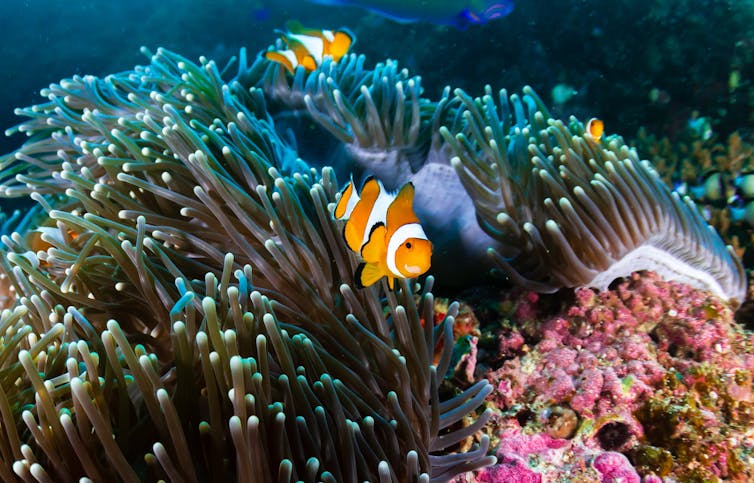
The COP26 summit may come to be regarded as a failure or an important milestone, but it certainly failed to address the “other” climate change problem: ocean acidification.
With the exception of rising sea levels, climate change impacts on the oceans have been treated as a peripheral matter at global climate change negotiations. This marginalisation of the oceans largely continued at COP26.
But states, including New Zealand and Australia, nevertheless have an obligation to prevent and mitigate excess carbon dioxide (CO₂) from entering the ocean.
Almost four decades ago, 168 states signed up to the UN Convention on the Law of the Sea (UNCLOS). Under this treaty, they must address CO₂ in the oceans consistent with (but distinct from) their obligations under the climate regime.
Ocean acidification (OA) is caused by excess CO₂ in seawater. Atmospheric concentrations of CO₂ have now reached 414ppm (from about 280ppm in 1750) and the oceans are a major sink, having absorbed nearly half of all anthropogenic emissions since the beginning of the Industrial Revolution some two centuries ago.

But rising levels of CO₂ in the oceans change the acidity of seawater, measured as pH. Ocean acidity has remained remarkably stable for more than 800,000 years, but has increased by about 30% in the last 200 years.
This has negative consequences for shell-forming organisms and coral reefs such as the Great Barrier Reef in Australia. Recent research suggests it may also affect the larvae of fish, including commercially important species such as yellow fin tuna.
Climate Agreements And The Oceans
The climate regime comprises the 1992 UN Framework Convention on Climate Change (UNFCCC), 1997 Kyoto Protocol and 2015 Paris Agreement.
It addresses CO₂ emissions, the primary cause of ocean acidification, but states have significant discretion over what action they take, and there is no explicit requirement to address CO₂ separately from other greenhouse gases.
Although the Paris Agreement sets a target of limiting average global warming to well below 2℃ above pre-industrial levels (and aims to keep it at 1.5℃), it does not set a target for limiting ocean pH change.
However, the Glasgow Climate Pact has, for the first time, explicitly set a target in respect of CO₂ emissions. It calls for a 45% cut relative to 2010 levels by 2030 and net zero by mid-century. This is a positive development in the context of addressing ocean acidification.
What The Law Of The Sea Says
Under part XII of UNCLOS, which has been accepted by all states as part of customary international law, states must take all measures necessary to “prevent, reduce and control” marine pollution from any source. States also have a general obligation to protect and preserve the marine environment.
Carbon dioxide can be classed as pollution under UNCLOS, and therefore states have an obligation to avoid or control it. UNCLOS requires states to prevent pollution from land-based sources and from the atmosphere.
Article 212 is particularly relevant to CO₂ pollution. It requires states to:
… adopt laws and regulations to prevent, reduce and control pollution of the marine environment from or through the atmosphere arising from their territory or vessels under their control.
However, this is a due diligence obligation: it relates to conduct (effort) rather than result. Article 212 does not specify what states must do to meet their obligation, but stipulates they should take into account internationally agreed rules and standards.
International Standards
Apart from emissions from vessels, there is no agreement on what these internationally agreed rules and standards are.
It can be argued the climate regime constitutes these standards, and if states comply with their commitments under the Paris Agreement they have met their obligations under Article 212 of UNCLOS. Supporters of this position assert it is unreasonable to expect states to go beyond their commitments under climate agreements, particularly when UNCLOS provides no additional guidance.
On the other hand, if it can be shown that commitments under the Paris Agreement are clearly insufficient to “prevent, reduce and control” ocean acidification, it would be anachronistic to say compliance with those standards constitutes “due diligence” under UNCLOS.
I argue the latter — the due diligence obligation under Article 212 of UNCLOS is not met by compliance with climate regime commitments, except where those commitments expressly relate to ocean acidification or CO₂ reductions. This conclusion is arguably supported by the UN’s 2015 adoption of the Sustainable Development Goal 14: Life in the Oceans.
One of the goal’s targets calls for states to explicitly address ocean acidification. This recognises that commitments under the Paris Agreement do not adequately address the issue.
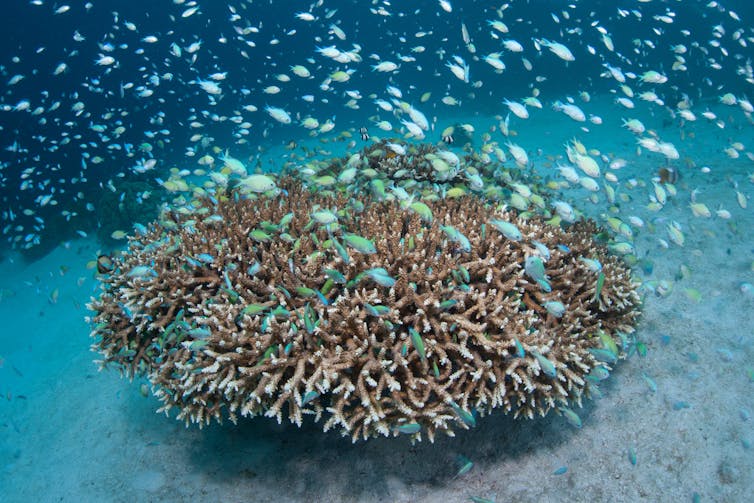
COP26 confirmed the climate regime is the main forum for addressing the consequences of climate change. But it is not the only game in town or the only legally relevant regime.
UNCLOS requires states to protect the oceans. These obligations must be expressly considered and incorporated into commitments made by states, including New Zealand and Australia, in international climate agreements and their actions to implement these at the domestic level.
COP27, to be held in Egypt next year, provides the next opportunity to address ocean acidification and to support a more integrated approach under both the climate change regime and the law of the seas.![]()
Karen Scott, Professor in Law, University of Canterbury
This article is republished from The Conversation under a Creative Commons license. Read the original article.
We must rapidly decarbonise road transport – but hydrogen’s not the answer
Robin Smit, University of Technology Sydney; Enoch Zhao, University of Technology Sydney, and Hussein Dia, Swinburne University of TechnologyHydrogen has been touted as the fuel of the future, and the technology features prominently in the Morrison government’s plan to reach net-zero emissions by 2050.
Earlier this month the government unveiled its “future fuels” strategy to reduce emissions in the transport sector, committing A$250 million for battery electric vehicles and hydrogen infrastructure. And in September, it pledged almost A$500 million towards the Clean Hydrogen Industrial Hubs Program.
Decarbonising transport is crucial in the fight to limit global warming to 1.5℃ this century. We estimate the sector contributes about 20% of global emissions – like burning two Olympic-size swimming pools filled with fossil fuels per minute, every minute of the year.
But as independent researchers in transport emissions and energy, we believe the focus on hydrogen in road transport is misplaced.
Projections show if all nations’ 2030 emissions reductions targets are met, the planet will be on track to heat by a catastrophic 2.4℃. In this pressing need to rapidly reduce global emissions before 2030, developing hydrogen for low-emissions road transport won’t happen fast enough, and it doesn’t pose a viable alternative to electric vehicles.
Hydrogen In A Nutshell
Hydrogen is already an important part of the global economy, including for the production of fertilisers and in oil refining. The federal government has identified hydrogen as a priority low emissions technology to develop further, with a focus on hydrogen refuelling infrastructure for major freight routes and passenger road corridors.
Almost all hydrogen today is produced using fossil fuels (natural gas and coal), and this accounts for about 2% of global emissions. Hydrogen is clean and climate friendly only if it’s produced from renewable sources of energy, such as solar, wind and hydro. This process uses electrolysis to convert water into hydrogen, and is aptly called “green hydrogen”.
For more than 20 years, proponents of hydrogen have been promising a future of clean energy. But while the pace of new green hydrogen projects is accelerating, most are still at an early stage of development. Just 14 major projects worldwide started construction in 2020, while 34 are at a study or memorandum of understanding stage.
Developing hydrogen technology is, indeed, important outside of the road transport sector, with promising options such as green steel which will reduce emissions and bring new Australian jobs.
But We’re Not Betting On Hydrogen For Road Transport
Global sales data for cars and light commercial vehicles, along with statements from corporate leaders, suggest many vehicle manufacturers don’t seriously consider hydrogen a viable and lucrative transport fuel.
The Honda Clarity hydrogen fuel cell vehicle, for example, ceased production in August 2021 to “trim underperforming models from its line-up”. Some manufacturers are even lobbying for a faster transition to electric cars.
Hydrogen may play a larger role in the long-haul truck market, as its stated benefits include a long drive range and short refuelling times, which are important for this sector.
But hydrogen competes with a dynamic and fast-moving electric truck market, which shows significant and continuous annual improvements in battery energy density, and prices. What’s more, truck makers – such as Daimler, MAN, Renault, Scania and Volvo – have indicated they see an all-electric future.
The often-stated benefits of hydrogen dissipate when compared with alternative electric truck technology. This includes battery swapping, which allows for short refuelling times, and the development of e-highways (roads that automatically recharge vehicles when they drive along it).
While it’s true these systems are still being tested in, for instance, Europe and the US, they have a promising outlook. For example, in July the UK government announced £2 million (A$3.66 million) to design overhead charging cables that would power electric lorries on a motorway.
Likewise, the battery swapping network in China already dwarfs the hydrogen refuelling network, although the system is still in its infancy.
Low Energy Efficiency
An overlooked but fundamental issue with using hydrogen in transport is its low energy efficiency. Hydrogen is not an energy source, it is an energy carrier. This means it needs to be generated, compressed or liquefied, transported and converted back into useful energy – and each step of the process incurs a substantial energy loss.
In fact, hydrogen vehicles and vehicles that run on petrol or diesel have a similarly low energy performance: just 15-30% of the available energy in the fuels is used for actual driving. Compare this to battery electric vehicles, which use 70-90% of the available energy.
In other words, the amount of renewable energy required for a green hydrogen vehicle to drive one kilometre is the same as what’s required for three electric vehicles to drive the same distance.
This is a very important issue. The more energy required for transport, the more renewable energy needs to be generated, and the higher the cost and more difficult it becomes to decarbonise the economy rapidly and at scale.
There are three other, perhaps less well known, issues with hydrogen we believe should be seriously considered.
First, the potential for significant leakage of hydrogen during production, transport and use. Hydrogen is a more potent greenhouse gas than carbon dioxide, and any loss of hydrogen reduces the overall energy efficiency.
Second, hydrogen emissions from leakage may add to local and regional air pollution, and may even deplete the ozone layer in the stratosphere, but further research is needed in this space.
And finally, hydrogen needs clean fresh water, and lots of it. A single hydrogen fuel cell car requires about 9 litres of clean, demineralized water for every 100km driven. For a large truck, this would be over 50 litres per kilometre.
If sea water and desalination plants were used to produce the water, another energy loss would be added to the production process, penalising overall energy efficiency even further.
Focus On Electric Vehicles
Decarbonising road transport needs to be rapid, deployed at scale, and requires a holistic strategy that promotes shifts in everyday travel behaviour. Betting on the future large-scale availability of hydrogen for this sector won’t see this happen fast enough. It also risks locking in fossil-fuel dependency, and its additional greenhouse gas emissions, if upscaling clean hydrogen falls short of expectations.
We need to minimise energy demand and improve energy efficiency in transport as much as possible and as fast as possible. The available evidence suggests battery electric vehicles are the only feasible technology that can achieve this in the near future.
For a rapid reduction in greenhouse gas emissions, we should electrify transport where we can, and use other options like green hydrogen where we genuinely can’t, such as long-range shipping and aviation. And depending on how truck electrification efforts develop, hydrogen may still have a role in long-haul trucking, but it will use a lot of extra renewable energy.
A logical first step is to convert the current global production of fossil-fuel based hydrogen to green hydrogen. But the focus must be on rolling out electric vehicles across Australia and, indeed, the world.
The authors are grateful for the discussions with and contributions made by Professor Eckard Helmers (University of Applied Sciences Trier, Germany) and Dr Paul Walker (University of Technology Sydney).![]()
Robin Smit, Adjunct Associate Professor, University of Technology Sydney; Enoch Zhao, PhD Candidate, University of Technology Sydney, and Hussein Dia, Professor of Future Urban Mobility, Swinburne University of Technology
This article is republished from The Conversation under a Creative Commons license. Read the original article.
The ocean is essential to tackling climate change. So why has it been neglected in global climate talks?

Climate change is commonly discussed as though it’s a uniquely atmospheric phenomena. But the crisis is deeply entwined with the ocean, and this has largely been neglected in international climate talks.
The latest international climate negotiations made some progress by, for the first time, anchoring oceans permanently into the multilateral climate change regime. But the Glasgow Climate Pact is still leagues from where it needs to be to adequately reflect the importance of oceans to our climate system.
Most countries have targets for land-based emissions – but there are no such targets for oceans. Yet the ocean plays a vital role in helping balance the conditions humans and most other species need to survive, while also offering a substantial part of the solution to stop the planet warming over the crucial limit of 1.5℃ this century.
So how can oceans help us tackle the climate crisis? And what progress has been made in international negotiations?
The Ocean’s Incredible Potential
Since industrialisation, the ocean has absorbed 93% of human-generated heat and one-third of anthropogenic carbon dioxide (CO₂). The consequences of this are profound, including the thermal expansion of water (the key cause of sea level rise), ocean acidification, deoxygenation (oxygen loss), and forcing marine life to redistribute to other places.
Alarmingly, this may one day lead the ocean to reverse its role as a carbon sink and release CO₂ back into the atmosphere, as its absorption ability declines.
Equally important is ocean-based climate mitigation, which could provide more than 20% of the emissions reductions needed for the 1.5℃ goal.
Crucially, we must see changes to maritime industries. The shipping industry alone has a similar carbon footprint to Germany – if shipping were a country it would be the world’s sixth-largest emitter. Although high on the International Maritime Organisation’s agenda, the decarbonisation of shipping still lacks adequate targets or processes.
Oceans can also provide climate-safe, sustainable food choices. Current food systems, such as emissions-intensive agriculture, fishing, and processed foods are responsible for one-third of global emissions. Considerable environmental (and health) benefits can be gained by shifting our diets to sustainable “blue foods”.
These include seafoods sourced from fisheries with sustainable management practices, such as avoiding overfishing and reducing carbon emissions. Markets and technologies should also be geared towards the large-scale production and consumption of aquatic plants such as seagrasses.
There’s also a wealth of opportunity in “blue carbon” – capturing CO₂ in the atmosphere by conserving and restoring marine ecosystems such as mangroves, seagrasses and salt marshes. However, the success of nature-based solutions depends on a healthy ocean ecosystem. For example, there are emerging concerns around the impact of plastic pollution on plankton’s ability to absorb CO₂.
But perhaps the greatest impact would come from adopting offshore renewable energy. This has the potential to offer one-tenth of the emissions reductions we need to reach the 1.5℃ goal. The International Energy Agency has estimated offshore wind could power the world 18 times over its current consumption rate.
Climate Talks Are Making Slow Progress
For more than a decade, the inclusion of oceans in climate talks has been piecemeal and inconsistent. Where they have been part of negotiations, including at COP26, talk has focused on the potential for coastal areas to adapt to climate change impacts such as sea-level rise, as first raised in international fora in 1989 by small island states.
The final COP26 agreement, known as the Glasgow Climate Pact, made slight progress.
The pact recognised the importance of ensuring the ocean ecosystem’s integrity. It established the “the Ocean and Climate Change Dialogue” as an annual process to strengthen ocean-based action. And it invited UNFCCC bodies to consider how to “integrate and strengthen ocean-based action into existing mandates and workplans” and report back.
While these are positive measures, at this stage they don’t require action by parties. Therefore, they’re only a theoretical inclusion, not action-oriented.
We still lack national targets and clear, mandatory international requirements for countries to consider sinks, sources and activities beyond the shoreline in their climate planning and reporting.
Where COP26 did progress was its focus on whether ocean impacts and mitigation will finally be brought into the mainstream climate agenda. For the first time in five years, a new “Because the Ocean” declaration was released, which calls for the systematic inclusion of the oceans in the UNFCCC and Paris Agreement process.
What Do We Do Now?
What’s now needed is a list of mandated requirements that ensure countries report on and take responsibility for climate impacts within their maritime territories.
But as COP26 president Alok Sharma said of the summit as a whole, it was a “fragile win”. We still lack any reference to consistency with existing mechanisms, such as the law of the sea convention or how funding will be allocated specifically to oceans.
As such, the actual impact of COP26 on the inclusion of oceans in climate action remains uncertain. It will depend on how the UNFCCC bodies respond to these directives, and their success in extending obligations to state parties.
Responding to the climate crisis means we need to stop pretending the ocean and atmosphere are separate. We must start including ocean action as a routine part of climate action.

This story is part of The Conversation’s coverage on COP26, the Glasgow climate conference, by experts from around the world.
Amid a rising tide of climate news and stories, The Conversation is here to clear the air and make sure you get information you can trust. More. ![]()
Dr Sali Bache, Strategic Advisor in International Policy and Oceans , ClimateWorks Australia
This article is republished from The Conversation under a Creative Commons license. Read the original article.
Bushcare In Pittwater
Where we work Which day What time
Avalon
Angophora Reserve 3rd Sunday 8:30 - 11:30am
Avalon Dunes 1st Sunday 8:30 - 11:30am
Avalon Golf Course 2nd Wednesday 3 - 5:30pm
Careel Creek 4th Saturday 8:30 - 11:30am
Toongari Reserve 3rd Saturday 9 - 12noon (8 - 11am in summer)
Bangalley Headland 2nd Sunday 9 to 12noon
Bayview
Winnererremy Bay 4th Sunday 9 to 12noon
Bilgola
North Bilgola Beach 3rd Monday 9 - 12noon
Algona Reserve 1st Saturday 9 - 12noon
Plateau Park 1st Friday 8:30 - 11:30am
Church Point
Browns Bay Reserve 1st Tuesday 9 - 12noon
McCarrs Creek Reserve Contact Bushcare Officer To be confirmed
Clareville
Old Wharf Reserve 3rd Saturday 8 - 11am
Elanora
Kundibah Reserve 4th Sunday 8:30 - 11:30am
 Mona Vale
Mona Vale Mona Vale Beach Basin 1st Saturday 8 - 11am
Mona Vale Dunes 2nd Saturday +3rd Thursday 8:30 - 11:30am
Newport
Bungan Beach 4th Sunday 9 - 12noon
Crescent Reserve 3rd Sunday 9 - 12noon
North Newport Beach 4th Saturday 8:30 - 11:30am
Porter Reserve 2nd Saturday 8 - 11am
North Narrabeen
Irrawong Reserve 2nd Saturday 2 - 5pm
Palm Beach
North Palm Beach Dunes 3rd Saturday 9 - 12noon
Scotland Island
Catherine Park 2nd Sunday 10 - 12:30pm
Elizabeth Park 1st Saturday 9 - 12noon
Pathilda Reserve 3rd Saturday 9 - 12noon
Warriewood
Warriewood Wetlands 1st Sunday 8:30 - 11:30am
Whale Beach
Norma Park 1st Friday 9 - 12noon
Western Foreshores
Coopers Point, Elvina Bay 2nd Sunday 10 - 1pm
Rocky Point, Elvina Bay 1st Monday 9 - 12noon
Gardens And Environment Groups And Organisations In Pittwater
Avalon Golf Course Bushcare Needs You
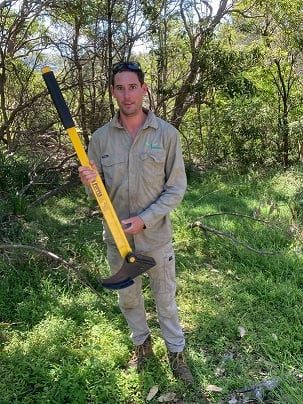
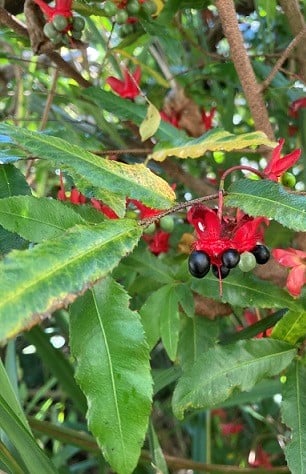
Pittwater Reserves + Others
A History Of The Campaign For Preservation Of The Warriewood Escarpment by David Palmer OAM and Angus Gordon OAM
Angophora Reserve - Angophora Reserve Flowers
Annie Wyatt Reserve - A Pictorial
Avalon's Village Green: Avalon Park Becomes Dunbar Park - Some History + Toongari Reserve and Catalpa Reserve
Bairne Walking Track Ku-Ring-Gai Chase NP by Kevin Murray
Bangalley Headland Bangalley Mid Winter
Banksias of Pittwater
Barrenjoey Headland: Spring flowers Barrenjoey Headland after fire
Bayview Baths
Bayview Wetlands
Beeby Park
Bilgola Beach
Botham's Beach
Bungan Beach Bush Care
Careel Bay Saltmarsh plants
Careel Bay Birds
Careel Bay Clean Up day
Careel Bay Playing Fields History and Current
Careel Creek
Careel Creek - If you rebuild it they will come
Centre trail in Ku-ring-gai Chase National Park
Chiltern Track- Ingleside by Marita Macrae
Clareville Beach
Clareville/Long Beach Reserve + some History
Coastal Stability Series: Cabbage Tree Bay To Barrenjoey To Observation Point by John Illingsworth, Pittwater Pathways, and Dr. Peter Mitchell OAM
Cowan Track by Kevin Murray
Curl Curl To Freshwater Walk: October 2021 by Kevin Murray and Joe Mills
Currawong and Palm Beach Views - Winter 2018
Currawong-Mackerel-The Basin A Stroll In Early November 2021 - photos by Selena Griffith
Currawong State Park Currawong Beach + Currawong Creek
Deep Creek To Warriewood Walk photos by Joe Mills
Drone Gives A New View On Coastal Stability; Bungan: Bungan Headland To Newport Beach + Bilgola: North Newport Beach To Avalon + Bangalley: Avalon Headland To Palm Beach
Dunbar Park - Some History + Toongari Reserve and Catalpa Reserve
Dundundra Falls Reserve: August 2020 photos by Selena Griffith - Listed in 1935
Elsie Track, Scotland Island
Elvina Track in Late Winter 2019 by Penny Gleen
Elvina Bay Walking Track: Spring 2020 photos by Joe Mills
Elvina Bay-Lovett Bay Loop Spring 2020 by Kevin Murray and Joe Mills
Fern Creek - Ingleside Escarpment To Warriewood Walk + Some History photos by Joe Mills
Ingleside
Ingleside Wildflowers August 2013
Irrawong - Ingleside Escarpment Trail Walk Spring 2020 photos by Joe Mills
Irrawong - Mullet Creek Restoration
Katandra Bushland Sanctuary - Ingleside
McCarrs Creek
McCarr's Creek to Church Point to Bayview Waterfront Path
McKay Reserve
Mona Vale Beach - A Stroll Along, Spring 2021 by Kevin Murray
Mona Vale Headland, Basin and Beach Restoration
Mount Murray Anderson Walking Track by Kevin Murray and Joe Mills
Mullet Creek
Narrabeen Creek
Narrabeen Lagoon Catchment: Past Notes Present Photos by Margaret Woods
Narrabeen Lagoon State Park
Narrabeen Lagoon State Park Expansion
Narrabeen Rockshelf Aquatic Reserve
Nerang Track, Terrey Hills by Bea Pierce
Newport Bushlink - the Crown of the Hill Linked Reserves
Newport Community Garden - Woolcott Reserve
Newport to Bilgola Bushlink 'From The Crown To The Sea' Paths: Founded In 1956 - A Tip and Quarry Becomes Green Space For People and Wildlife
Pittwater spring: waterbirds return to Wetlands
Pittwater's Lone Rangers - 120 Years of Ku-Ring-Gai Chase and the Men of Flowers Inspired by Eccleston Du Faur
Pittwater's Parallel Estuary - The Cowan 'Creek
Riddle Reserve, Bayview
Salvation Loop Trail, Ku-Ring-Gai Chase National Park- Spring 2020 - by Selena Griffith
Stapleton Reserve
Stapleton Park Reserve In Spring 2020: An Urban Ark Of Plants Found Nowhere Else
The Chiltern Track
The Resolute Beach Loop Track At West Head In Ku-Ring-Gai Chase National Park by Kevin Murray
Towlers Bay Walking Track by Joe Mills
Trafalgar Square, Newport: A 'Commons' Park Dedicated By Private Landholders - The Green Heart Of This Community
Turimetta Beach Reserve by Joe Mills, Bea Pierce and Lesley
Turimetta Beach Reserve: Old & New Images (by Kevin Murray) + Some History
Turimetta Headland
Warriewood Wetlands and Irrawong Reserve
Whale Beach Ocean Reserve: 'The Strand' - Some History On Another Great Protected Pittwater Reserve
Winji Jimmi - Water Maze

New Shorebirds WingThing For Youngsters Available To Download
A Shorebirds WingThing educational brochure for kids (A5) helps children learn about shorebirds, their life and journey. The 2021 revised brochure version was published in February 2021 and is available now. You can download a file copy here.
If you would like a free print copy of this brochure, please send a self-addressed envelope with A$1.10 postage (or larger if you would like it unfolded) affixed to: BirdLife Australia, Shorebird WingThing Request, 2-05Shorebird WingThing/60 Leicester St, Carlton VIC 3053.

 Shorebird Identification Booklet
Shorebird Identification Booklet
The Migratory Shorebird Program has just released the third edition of its hugely popular Shorebird Identification Booklet. The team has thoroughly revised and updated this pocket-sized companion for all shorebird counters and interested birders, with lots of useful information on our most common shorebirds, key identification features, sighting distribution maps and short articles on some of BirdLife’s shorebird activities.
The booklet can be downloaded here in PDF file format: http://www.birdlife.org.au/documents/Shorebird_ID_Booklet_V3.pdf
Paper copies can be ordered as well, see http://www.birdlife.org.au/projects/shorebirds-2020/counter-resources for details.
Download BirdLife Australia's children’s education kit to help them learn more about our wading birdlife
Shorebirds are a group of wading birds that can be found feeding on swamps, tidal mudflats, estuaries, beaches and open country. For many people, shorebirds are just those brown birds feeding a long way out on the mud but they are actually a remarkably diverse collection of birds including stilts, sandpipers, snipe, curlews, godwits, plovers and oystercatchers. Each species is superbly adapted to suit its preferred habitat. The Red-necked Stint is as small as a sparrow, with relatively short legs and bill that it pecks food from the surface of the mud with, whereas the Eastern Curlew is over two feet long with a exceptionally long legs and a massively curved beak that it thrusts deep down into the mud to pull out crabs, worms and other creatures hidden below the surface.
Some shorebirds are fairly drab in plumage, especially when they are visiting Australia in their non-breeding season, but when they migrate to their Arctic nesting grounds, they develop a vibrant flush of bright colours to attract a mate. We have 37 types of shorebirds that annually migrate to Australia on some of the most lengthy and arduous journeys in the animal kingdom, but there are also 18 shorebirds that call Australia home all year round.
What all our shorebirds have in common—be they large or small, seasoned traveller or homebody, brightly coloured or in muted tones—is that each species needs adequate safe areas where they can successfully feed and breed.
The National Shorebird Monitoring Program is managed and supported by BirdLife Australia.
This project is supported by Glenelg Hopkins Catchment Management Authority and Hunter Local Land Services through funding from the Australian Government’s National Landcare Program. Funding from Helen Macpherson Smith Trust and Port Phillip Bay Fund is acknowledged.
The National Shorebird Monitoring Program is made possible with the help of over 1,600 volunteers working in coastal and inland habitats all over Australia.
The National Shorebird Monitoring program (started as the Shorebirds 2020 project initiated to re-invigorate monitoring around Australia) is raising awareness of how incredible shorebirds are, and actively engaging the community to participate in gathering information needed to conserve shorebirds.
In the short term, the destruction of tidal ecosystems will need to be stopped, and our program is designed to strengthen the case for protecting these important habitats.
In the long term, there will be a need to mitigate against the likely effects of climate change on a species that travels across the entire range of latitudes where impacts are likely.
The identification and protection of critical areas for shorebirds will need to continue in order to guard against the potential threats associated with habitats in close proximity to nearly half the human population.
Here in Australia, the place where these birds grow up and spend most of their lives, continued monitoring is necessary to inform the best management practice to maintain shorebird populations.
BirdLife Australia believe that we can help secure a brighter future for these remarkable birds by educating stakeholders, gathering information on how and why shorebird populations are changing, and working to grow the community of people who care about shorebirds.
To find out more visit: http://www.birdlife.org.au/projects/shorebirds-2020/shorebirds-2020-program
Aussie Bread Tags Collection Points

Bear Turns To A Life Of Crime: BBC Earth Kids
Australia Post Issues Fun And Festive Christmas Stamps
Australia Post has released new stamps to help spread joy this Christmas with a range of designs that have something for everyone.
Three of the 2021 Christmas stamp designs show the long-standing tradition of celebrating Christmas with gingerbread treats, while two traditional stamps present religious artworks featuring the Madonna and Child, made from glazed terracotta clay.
Additionally, the light-hearted Christmas Island Christmas stamp designs feature Santa Claus interacting with the island’s fauna, as he takes a well-earned break from delivering presents to enjoy some snorkelling.
Australia Post Group Manager Philatelic Michael Zsolt said this year’s Christmas stamps will give everyone a chance to spread joy this Christmas with a message that is meaningful to them.
“Each year, we always strive to ensure there is something for everyone with our Christmas stamps,” said Mr. Zsolt.
“The stamps are always popular, and the Christmas Island Christmas stamps in particular are a great way to bring a real sense of fun to any Christmas card delivery.
“This year, our The Elf on the Shelf and Disney Christmas-themed licensed stamp packs are also sure to be a hit with families.”
The gingerbread stamps were designed by Sonia Young, and the religious stamps by Jo Muré, both of Australia Post Design Studio, with this year’s Christmas Island stamp issue illustrated by Andrew McIntosh.







The stamps’ denominations range from 65 cents for domestic sending to $2.40 for international sending, with Christmas-card postage rates valid during November and December.
All stamps and associated products including stamp packs, first day covers and maxicard sets, are on sale now at participating Post Offices, via mail order on 1800 331 794, and online while stocks last.
For more information visit auspost.com.au/stamps or australiapostcollectables.com.au
Verdi’s "La Traviata" Interpreted By Fish
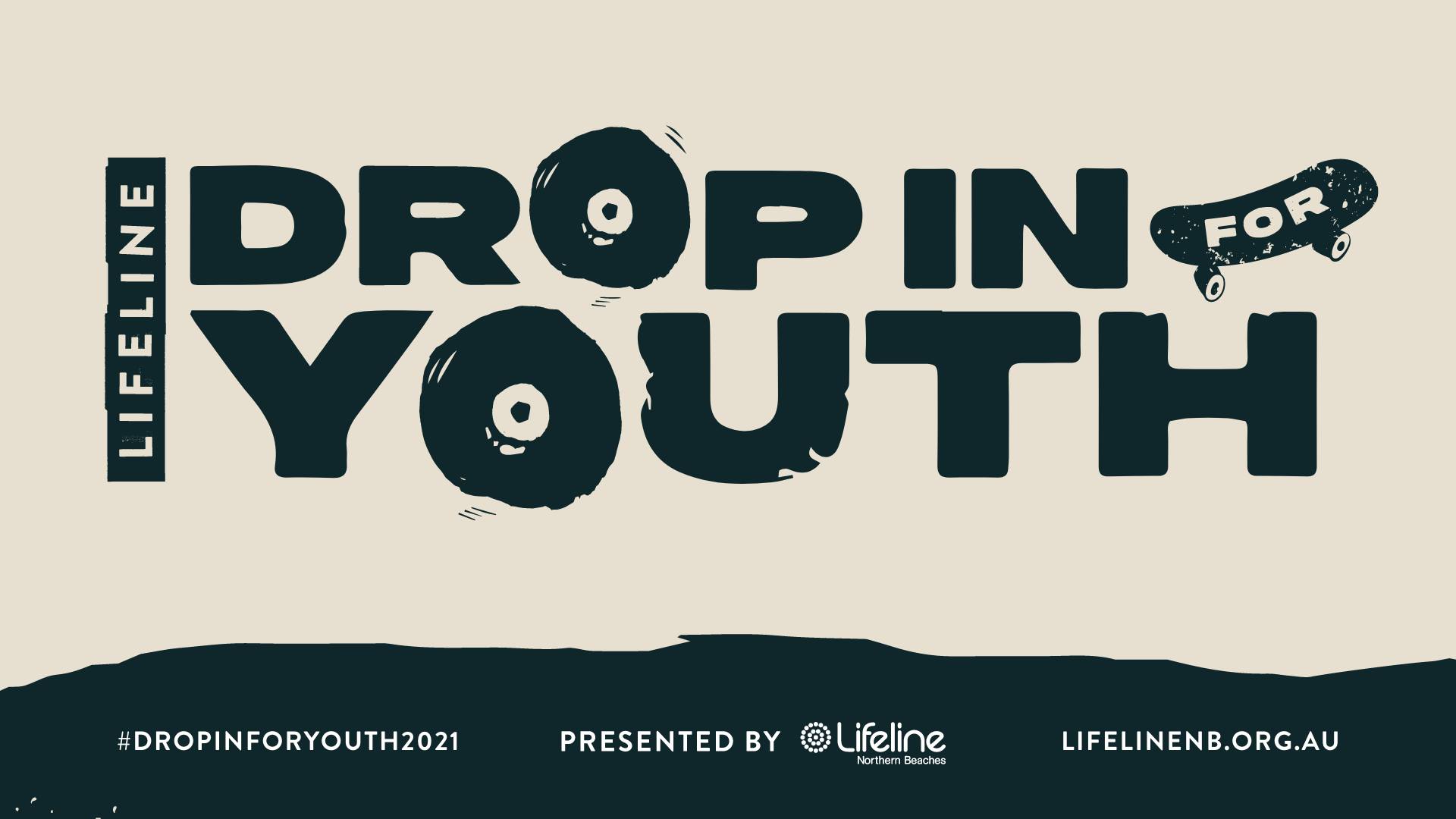
JOIN Ruby “Rockstar” Trew at DROP IN for YOUTH 2021
SKATE VERT COMP
+ Skate Park Fun - BEST Limbo, Highest Ollie, Board Jump and Trick Jam
OVER $10,000 in CASH - PRIZES - GIVEAWAYS to be WON!
DJ - FOOD TRUCKS - CAFE
SATURDAY 11 DECEMBER 2021 9:30AM
@MONA VALE SKATE PARK, 1604 Pittwater Road, Mona Vale
Saturday, 11 December 2021; 09:30 am- $15 entry online. $20 entry on event day, rego opens 9:30am. Vert Comp kicks off 10:30am.
Tickets: https://lifelinenb.grassrootz.com/drop-in-for-youth-2021
SKATE VERT COMP Kicks off 10:30am
Divisions:
- - 6 & Under - Girls and Boys
- - 8 & Under - Girls and Boys
- - 12 & Under - Girls and Boys
- - 16 & Under - Girls and Boys
- - Open Women’s - All Ages
- - Open Men’s - All Ages
- - Masters 45+ - Women's and Men's
EVENT T&C's
Participants can only compete in a single category for the event. Age Group participants are competing for prizes. Entry into the Open category is for anyone who wants to compete for prize money.
Open and Masters participants are competing for ca$h and GLORY!
Skate Park Fun - BEST Limbo, Highest Ollie, Board Jump and Trick Jam competitions are for everyone to have some fun!
Presented by: Avalon Youth Hub - Business Education Network (THE BEN) - Hurley ANZ - Lifeline Northern Beaches - Modest Eyewear Co - Monster Skate Park - Rotaract - Skater HQ
Lifeline Northern Beaches is offering FREE face-to-face counselling at the Avalon Youth Hub for people aged 15-24. Counselling is safe and confidential, and our service is available with or without a referral. For more information, visit www.lifelinenb.org.au/avalon-youth-hub. To book an appointment, call Lifeline Northern Beaches on 9949 5522 or email counselling@lifelinenb.org.au
Birds’ feeding habits are affected by their personality and self-control – new research
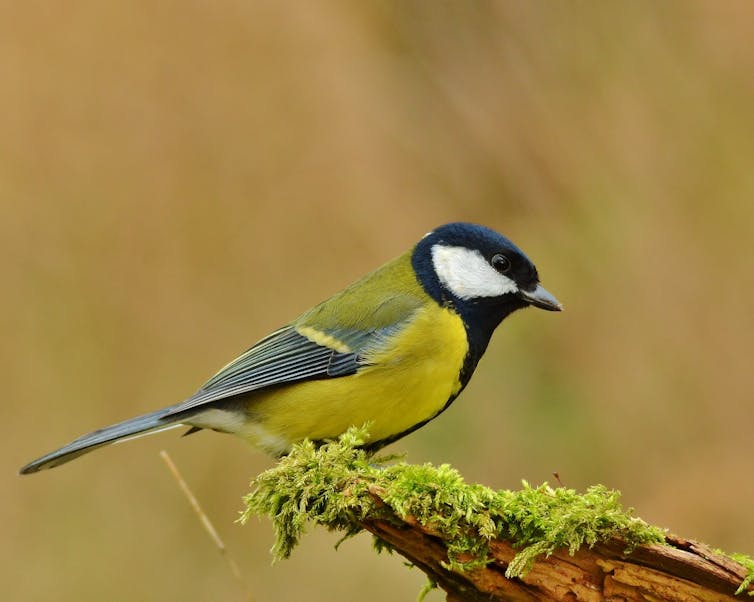
For a long while, it was assumed that only humans have personalities or can exercise self-control. Now, biologists are beginning to discover that birds and other wild animals share these traits with humans.
We explored how self-control and personality influenced feeding behaviour in the great tit, a common species of garden bird in Eurasia, and our results revealed that both factors play a large role in how they make their decisions.
Self-control is the ability to control one’s impulses. Even as adults, many of us struggle with self-control on a daily basis. Against our better judgment, we might choose to eat that extra slice of cake rather than an apple, or switch on the TV instead of going for that walk. We reprimand ourselves and each other lightheartedly when we fail, and in many cases there are no serious ramifications for a few less-than-ideal choices.
But the evidence suggests that success in many areas of life depends on self-control.
Personality also guides many of our decisions. Our “extraversion” influences how we socialise, and our “openness” affects our tendency to take risks. Unsurprisingly, personality too can influence life outcomes, such as happiness and health.
Self-Control In The Great Tit
Life in the wild is harsh and few animals live as long as they might, often because of their inflexibility when making decisions.
We wanted to explore whether they just keep on doing the same old thing, led by their natural impulses - or can they change their behaviour when needed.
First, we trained wild great tits, temporarily taken into captivity, to become proficient at finding hidden food that could only be accessed from the side of an opaque plastic tube. When the tube was switched with one that was transparent but otherwise identical, many birds pecked impulsively at the front of the tube, through which the food could be seen. Others resisted this impulse and quickly realised that food could only and easily be taken from the side.
This “detour-reaching task” is often used as a way of measuring inhibitory control, one of the key cognitive processes in the brain that underpins self-control.
Those same great tits with greater inhibitory control were also those who were more flexible in an experiment that mimicked one of the ways that great tits find food in nature.
In this experiment, birds were trained to find mealworms hidden under sand until this behaviour became very natural to them. When a better – bigger and more visible – food option was suddenly also made available on the surface of the sand, the birds who were identified as having good inhibitory control earlier were also the ones who were able to resist their impulse, or break their habit, of simply looking for hidden food under the sand. Instead, they switched to the new better food option, even though it was in a transparent glass vial, so not so easily accessible.
Foraging flexibility is important for survival, but this is the first time it has been linked to self-control in animals.
Personality Also Influenced Flexibility
However, we also wanted to explore whether personality played a role in their foraging flexibility.
To measure personality in the great tit, we used a standard test of exploration behaviour – the tendency to explore new environments.
This bears a strong resemblance to the “openness to new experiences” personality scale in humans.
Exploration behaviour is measured easily by assessing how much birds move around when put in a new environment, in our case a room with five artificial trees that they had never seen before.
Some birds were faster explorers than others. Previous studies have shown that this simple personality trait is inherited from parents and predicts all sorts of life outcomes in great tits, including sexual promiscuity (which can increase the paternity a male acquires at other nests but can also lead to a loss of paternity at their own nest) and length of life.
It also predicts the tendency to take risks. Fast explorers are risk takers.
So when the sand foraging experiment was repeated under predation risk, achieved by placing a stuffed hawk briefly in the same room at a safe distance from the birds, the fast explorers were far more willing to switch to the new food on the surface.
It is well known that animals do not like novelty when there is a threat from a predator, and we suspect this is why the slow explorers, those that avoid taking risks, stayed with choosing the hidden but familiar food, while the fast explorers were happy to increase their risk of being eaten, so they could exploit a new, and potentially better, food source.
The Complexity Of Animal Behaviour
Our findings suggest that these two quite different behavioural traits – exploration behaviour and risk-taking (personality) and self-control – together explain how flexible birds are when choosing food. This illustrates how complex animal behaviour can be.
Since survival and reproduction depend enormously on food, our results suggest that self-control and personality may well be influential determinants of Darwinian fitness, that is, the ability to pass on genes to the next generation.
However, the implications for fitness are not easy to predict. In the same way that impulsive behaviour can also be good for people in specific circumstances – it may benefit innovation and entrepreneurship – the costs and benefits of having good or poor self-control, or indeed of being a fast or slow explorer is also likely to vary in the wild.
Humanity would do well to remember that we are controlled by the same behavioural traits that determine whether wild animals prosper or become extinct, and ensure that we apply our ability for flexible thinking to the most important challenges facing our planet.![]()
John Quinn, Professor in Zoology, University College Cork and Jenny Coomes, PhD Candidate, Biological Sciences, University College Cork
This article is republished from The Conversation under a Creative Commons license. Read the original article.
Trauma and transformation – a psychologist on why difficult experiences can radically change us

It’s human instinct to avoid suffering and try to make life as comfortable and easy as possible. But paradoxically, a great deal of research has shown that suffering and trauma can have positive long-term effects.
Many people who go through intense trauma, for example, become deeper and stronger than they were before. They may even undergo a sudden and radical transformation that makes life more meaningful and fulfilling.
Indeed, research shows that between half and one-third of all people experience significant personal development after traumatic events, such as bereavement, serious illness, accidents or divorce. Over time, they may feel a new sense of inner strength and confidence and gratitude for life and other people.
They may develop more intimate and authentic relationships and have a wider perspective, with a clear sense of what is important in life and what isn’t. In psychology, this is referred to as “post-traumatic growth”.
Over the past 15 years as a psychologist, I’ve been researching an especially dramatic form of post-traumatic growth that I call “transformation through turmoil”. It sometimes happens to soldiers on a battlefield, to the inmates of prison camps who are on the verge of starvation, or to people who have been through periods of severe addiction, depression, bereavement or illness.
People report feeling as if they have taken on a new identity. They shift into a much more intense and expansive awareness, with a powerful sense of wellbeing. The world around them seems more real and beautiful. They feel more connected to other people, and to nature.
‘Waking Up’
In my new book Extraordinary Awakenings, I share some of these cases and explore what we can learn from these transformations and how we can apply this to our own personal development.
Take, for example, the story of Adrian, who underwent transformation while in prison in Africa. He was locked up in a tiny cell 23 hours a day, with no idea of when he might be released. During the endless hours of incarceration, he began to reflect on his life and to let go of the past and any sense of failure or disappointment.
In the cell, he had a small statuette of the Buddha, which he had picked up on his travels around Asia. In a kind of spontaneous meditation practice, he began to focus his attention on the statuette for long periods. Over the next few weeks, Adrian began to feel more at peace, until he experienced a sudden shift:
It was like the flick of a switch … It was a complete feeling of release and acceptance, of everything and anything that was going to happen. It was a release of blame, of anxiety, of anger and ego. For three days I was in a state of what can best be described as grace. After that, the feeling eased, but it remained inside me.
A woman called Eve had a similar experience. After 29 years of addiction, she felt physically and emotionally broken and attempted suicide. She survived, but this encounter with death brought about a shift and her urge to drink was gone. Eve felt so different that, as she told me: “I looked at myself in the mirror, and I had no idea who I was”.
Despite initially being a little confused by her transformation, Eve felt liberated and had a heightened awareness and an increased sense of gratitude and connection. She has never felt the urge to drink again and has now been sober for ten years.
The Breakdown Of Identity
It’s important to note that there is nothing religious about transformation through turmoil. Essentially, it’s a psychological experience, related to a breakdown of identity.
In my view, it’s caused by the dissolution of psychological attachments, such as hopes, dreams and ambitions, status, social roles, beliefs and possessions. These attachments sustain our normal sense of identity. So when they dissolve away, our identity collapses. This is usually a painful experience, but in some people, it seems to allow a new identity to emerge.
And my research indicates that such deep-rooted and consequential changes, usually remain indefinitely. This is one reason why I don’t believe that the phenomenon can be explained away as self-delusion or dissociation – a mental process of disconnecting from one’s thoughts, feelings, memories or sense of identity.
Transformation through turmoil also reveals the massive potential and deep resilience within human beings – that we are usually unaware of until we face challenges and crises. So in essence, in the process of breaking us down, turmoil and trauma may also wake us up.![]()
Steve Taylor, Senior Lecturer in Psychology, Leeds Beckett University
This article is republished from The Conversation under a Creative Commons license. Read the original article.
Dogs and TV: here’s what we know about how they respond

On the face of it, a recently launched TV channel dedicated to dogs seems, well, barking mad. But our pets often spend long periods of time home alone, and providing some form of enrichment and stimulation can be very beneficial to dogs and their owners alike.
During the pandemic, many dogs enjoyed having their owners around more often than normal due to the public health restrictions. But the gradual return to the workplace, along with increasingly busy social calendars, has meant that our dogs are once again spending more time in their own company.
Some of our canine friends – particularly those dogs who have only known life with their owners since the pandemic began – are now experiencing some difficulties adapting to this new lifestyle. So, any tool which can provide stimulation and entertainment can be helpful to minimise their distress and keep them happy and healthy.
Canine Separation Anxiety Is Real
Some dogs relish their time alone. It gives them a chance to grab some valuable resting and relaxation time – indeed, dogs can benefit from up to 16 hours of sleep per day.
Sadly, other dogs find being left alone rather more worrying, which can lead to some problematic separation-related behaviours.
Excessive barking or howling, reactivity to external sounds and movement, or even destructive behaviour are commonly reported.
While these are upsetting and sometimes inconvenient for us, often causing expense and occasionally difficult relationships with neighbours, they are also clear signs of emotional distress in our dogs.
How To Help Dogs Relax When Home Alone
In combination with supportive training, there are a number of recommended ways to make alone time a little easier for our dogs. These include using interactive feeding toys, creating quiet, safe spaces for them, as well as going for a walk with your dog before you go out.

Another common method is to leave on the radio or TV for your dog when they are alone, to minimise disturbances from outside. My own dogs often spend their days listening to classical music, which has been shown to reduce stress in kennelled dogs.
Do Dogs Relate To TV Visuals?
It is widely acknowledged that dogs do not watch TV in the same way as we do – a box-set binge means sofa time with their favourite person rather than catching up on the latest hit drama. But our dogs will probably be aware that we settle down and relax when the TV is on, so that association might be useful in encouraging them to be calm, even when we are not there.
Dogs do not see colour like us either – they see the world in more muted colours but can better detect contrast in dim light.
Movement on screen can be detected by dogs and there are plenty of reports of dogs watching and reacting to moving animals, cars or other objects on TV.
For breeds and types that are stimulated by chasing objects, movement on TV can create interest and perhaps even activity – you might want to be careful about what is around your TV though, just in case your dog’s interest becomes more animated.
A key question is whether dogs can recognise what they see on screen. Dogs can certainly respond to images, and use touch screen devices after training. But it is much more challenging to understand what they actually see.
Dogs do not seem to fully respond to their own reflection in a mirror meaning that we cannot really be sure if they recognise another dog on screen.
Scent is a significant sense for our dogs, especially in recognising each other, and this is clearly missing when a dog watches TV. But, perhaps by combining the sights and sounds of dogs and other animals, our dogs can still be interested and stimulated by a TV in a positive way.
Dogs Are Sensitive To Sound
Dogs have very sensitive hearing. They are adept at orienting themselves to the origin of sounds. The typical head tilt of dogs when spoken to – or when they hear a particular type of sound – helps them to work out where the sound has come from.
Certain noises and frequencies will also either excite or soothe our dogs – my own spaniels react excitedly to the sound of pheasant calls common in TV period dramas.
Having a radio or TV on can give the impression of “normality” and a presence in the home, which can be reassuring. It can also be useful in training and desensitising dogs to the sound of unusual noises that might be frightening, or to disguise and drown out external noises that might disturb them.
Dogs who are physically and mentally stimulated tend to be happier, better behaved and have better relationships with us.
By making their world an interesting and enriching place, with opportunities to learn about the world and make positive associations with sights and sounds, we can help them relax and reduce any anxiety which life may bring.
TV, radio or training tools, in combination with other beneficial lifestyle choices such as exercise, diet, companionship and training, can go a long way towards having a happy and healthy dog.![]()
Jacqueline Boyd, Senior Lecturer in Animal Science, Nottingham Trent University
This article is republished from The Conversation under a Creative Commons license. Read the original article.
Bringing the metaverse to life: how I built a virtual reality for my students – and what I’ve learnt along the way

We’ve been hearing a lot recently about the metaverse – a vision for the internet which uses technology like virtual and augmented reality to integrate real and digital worlds. With Facebook changing its name to Meta to focus on this space, and other big tech companies like Microsoft coming onboard, there is much discussion about the potential of the metaverse to enhance the way we socialise, work and learn.
A key component of the metaverse ecosystem will be the creator economy. The virtual worlds within the metaverse need to be conceived, designed and built by individuals and organisations.
To that end, I established a module at the University of Nottingham in 2020 where up to 100 of my engineering students interact with each other in avatar form in a virtual world known as Nottopia. Nottopia began as a fantastical virtual island, and has since become a floating castle in the sky.
I’ve approached this as somewhat of a research project, surveying students about their experiences, and observing their behaviour within the virtual world. My observations have informed changes I’ve made to Nottopia along the way.
They’ve also informed my answers to three central questions, which I think are relevant to anyone considering their own virtual world – whether for education or any of the metaverse’s myriad other applications.

What Platform Should You Use?
To build a virtual world that others can join, you need to use a social virtual reality (VR) platform. I used Mozilla Hubs, but there are several others. These platforms can broadly be categorised according to accessibility and customisability.
Accessibility questions include whether the platform can run on everyday computers, including mobile devices, or whether it requires dedicated hardware, like VR headsets. From my perspective, it was important the virtual world be accessible on standard technology, but also that students could benefit from the immersive experiences that VR headsets afford (students can use VR headsets provided by the university if they wish).
Customisability is how easy it is to edit virtual worlds on the platform (usually, they have a set of “template” worlds), or create your own from scratch. Last year I edited an existing world, while this year I took several pre-existing building blocks (for example, bits of a castle) to re-imagine Nottopia.
The ability to customise this world has been essential for me. I needed to develop a world where we could easily gather for whole group discussions and presentations, as well as smaller group discussions. It also needed to be a space students could contribute to (for example by adding post-it notes, photos, videos and 3D objects).

What Should The Virtual World Look Like?
A second fundamental decision concerns whether the virtual world should be based on a real-world space (perhaps even aiming to replicate one as a digital twin) or should be purposefully different. When conceiving my VR module in spring/summer 2020, this was an interesting dilemma. As we were at the height of lockdown, I was tempted to recreate specific campus buildings so the students had the feeling of being at the university.
But based on a combination of educational theory and student feedback, I eventually created a world that was overtly fantastical. The aim was to motivate students through gamification – making their experience in the virtual world playful and challenging, somewhat like a game – and also provide an escape from the stresses of the pandemic. Hence the decision to start Nottopia as a futuristic building on a Mediterranean-style island. The reason I subsequently redesigned Nottopia as a castle on an island in the sky was to draw upon Nottingham’s reputation as a medieval city, and in response to students’ desire for a more expansive campus-style environment.

In Nottopia, I occasionally deliver lectures, but typically use the virtual space in more creative ways. For example, I often meet the students in the castle courtyard to discuss the week’s topic before asking them to follow a treasure trail around Nottopia’s buildings where they have to solve engineering problems at each stage.
How Complex Should The World Be?
Current social VR technology presents limitations on how detailed an environment can be before it causes performance problems. This is especially the case for software like Mozilla Hubs that runs on the browser (as opposed to an application you have to download and install) and which is accessible on mobile devices.
Generally, the factors which have the most significant impact on performance include the number of polygons (the basic shapes that make up a 3D object), texture sizes (the number of pixels for 2D images placed over 3D objects), and the overall file size of the world. This was challenging to balance. The more complex your world, the more you’ll end up with low frame rates (a jittery world). A complex world can also be restricted in the number of users who can join the space.
You might assume that creating a virtual world requires considerable technical skills, including the ability to write code. But my experiences have shown me this is not the case.
The development of each of these worlds took me roughly one week. I benefited from the fact that social VR platforms like Mozilla Hubs are increasingly user-friendly, requiring little or no technical know-how. And there are many online video tutorials available.
Ultimately, the process by which these virtual worlds are created should be human-centred – designed according to the abilities, goals and expectations of the intended users. Too often, we hear about or experience products that have ultimately failed because the designers were too focused on the technological possibilities, rather than the users. The metaverse will be no different.![]()
Gary Burnett, Professor of Transport Human Factors, Faculty of Engineering, University of Nottingham
This article is republished from The Conversation under a Creative Commons license. Read the original article.
Hideouts, harbours and homes: how vikings may have owed their success to their encampments

For many years, archaeologists and historians have provided an increasingly informed insight into the dynamic world of the vikings, chipping away at the clichés of a crazed, capricious people preoccupied with beards and bloodshed. One particular approach to understanding viking activity has been to study the encampments they set up along the coasts and rivers of western Europe, allowing them to substitute their ships for a fixed, onshore position whenever cold, fatigue, hunger, or other conditions compelled them to.
Often called “winter camps” or longphuirt, more than 100 of these sites were witnessed across the Atlantic archipelago and European mainland during the ninth century alone, and their tangible remains have been uncovered in places like Repton and Torksey in England, and Woodstown in Ireland. Most recently, potential viking encampments have also been pointed to near Zutphen in the Netherlands, as well as the Coquet Valley in Northumbria.
But where these camps have often been considered for their wider strategic roles, much less time has been spent on their everyday, practical planning and operation. New research, tying these different strands of evidence together, now reveals a far more intricate image of camp logistics, challenging notions of vikings simply waiting out the winter behind their walls in the company of their peers and plunder.
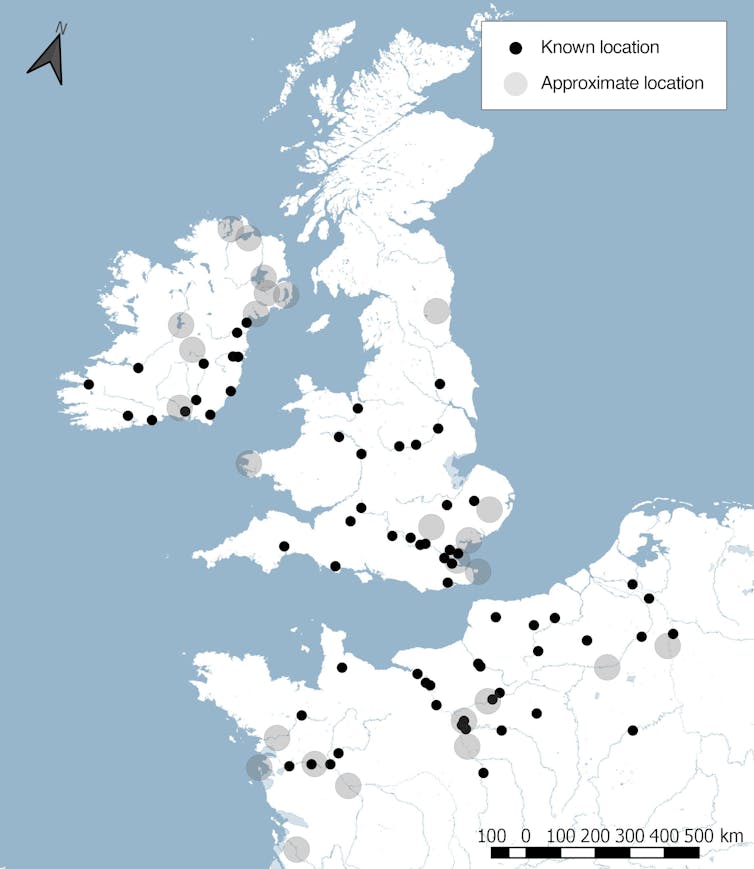
Safe Havens
No two viking camps would have been the same, and could have lasted anywhere from just a few hours to many months or even years.
Established in hostile environments, many used islands, wetlands, and other naturally defended positions to their advantage. Others took over prior man-made structures: on the Continent, for example, the Carolingian palace at Nijmegen was commandeered by vikings in 880, only for its new occupants to set fire to it the following year. Where needed, vikings would also have built their own ramparts, as seen in Repton, where the abbey church of St. Wystan seems to have been incorporated into a new perimeter wall as a makeshift gatehouse.
But protection from attack would have only been half the battle, as the continued safety of any local food stores, livestock, and non-combatants would have been just as important to the sustainability of any such camp.
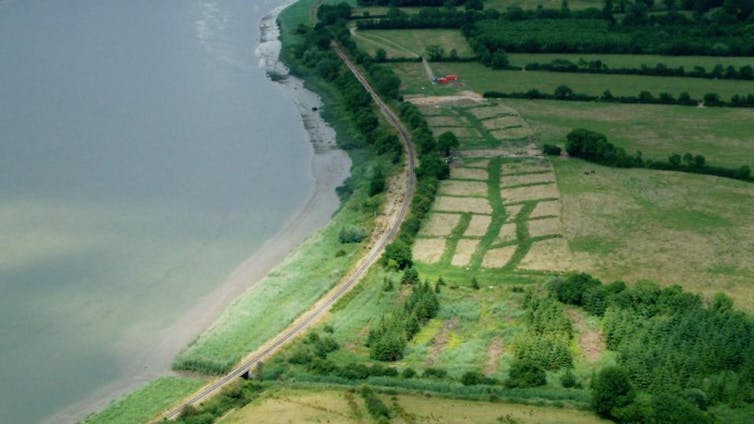
Eating Local
Like any armed force, viking groups required steady, reliable sources of food and water to keep their encampments viable. Under the looming spectre of starvation and malnutrition, they diversified their methods of obtaining provisions as much as possible. As well as hunting, fishing, and foraging around the camps, evidence exists that they raised crops and tended cattle themselves.
Less unexpectedly, vikings also obtained their food through violence – or the threat thereof. Those camped outside Paris in 885-886, for example, were seen carrying off harvests and herds, while others received large amounts of flour, livestock, wine, and cider as part of regional tribute payments.
Back at the camp, this food would have needed to be prepared for consumption and storage. Accordingly, quern-stones – used to grind grain into flour – have been recovered from viking bases in both England and Ireland, and a proposed encampment at Péran in Brittany has produced several iron cauldrons and other cooking vessels. Written records also describe vikings feasting on meat and wine within the confines of their camps.
Hustle And Bustle
Beyond the basics of protecting and feeding themselves, vikings engaged in a wide range of camp-bound activities, with shelters, stables, and workshops being built; ships being mended; and weapons, ornaments, and other items being crafted. To support these ongoing efforts, a steady stream of resources – including wood, stone, and (precious) metals – would have had to make its way into the camps.
Venues like these may not have been completely off-limits to outsiders, and may have even provided valuable opportunities to trade. The ninth-century Annals of St Bertin, for example, describe how vikings sought to “hold a market” on an island in the River Loire (now France). Shortly after, the Annals of Fulda also point to Frankish soldiers setting foot inside a viking camp on the River Meuse (now the Netherlands) – not to fight, but to trade. Physical traces of such commerce – including coins, silver bullion and trade weights – have been found at sites such as Torksey and Woodstown.
As well as offering vikings yet another way to obtain their supplies, occasions like these may have allowed items that were previously stolen or extorted to be returned to circulation.
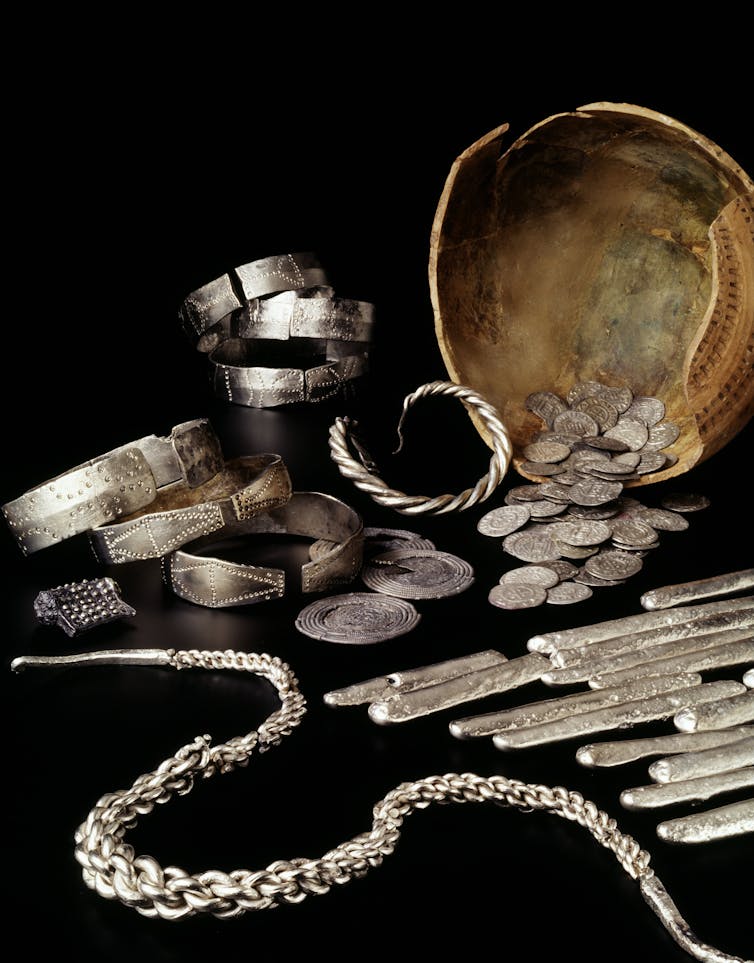
A Place For Everything
All in all, viking camps were by no means dormant or disorganised, and doubled as command posts, armouries, treasuries, granaries, prisons, workshops, markets, harbours, and homes. Hosting diverse and dynamic communities of dozens, hundreds, or at times even thousands of people, some provided support to regional viking groups well beyond the span of a single winter.
To keep camps like these up and running would have been no small feat, relying on levels of planning and discipline not commonly associated with viking activity. As a result, the success of the encampments provides a key insight into a wider viking phenomenon that was neither arbitrary nor aimless as it made landfall across western Europe.![]()
Christian Cooijmans, British Academy Postdoctoral Fellow, University of Liverpool
This article is republished from The Conversation under a Creative Commons license. Read the original article.
Does batting second in T20 world cup cricket offer a crucial advantage? A statistics professor explains

While Australian cricket fans celebrate their team’s triumph at the 2021 ICC Men’s T20 World Cup, the tournament’s results have sparked a debate over whether the team that bats second has a potentially match-winning advantage before a ball is even bowled.
Of the 45 matches played at the tournament, 29 (around 64%) were won by the team batting second. Put another way, teams batting second won almost twice as many matches as teams batting first.
Some critics have gone as far as to suggest teams can “win on a coin toss” when deciding which side will bat first.
There are a range of suggested advantages to batting second, particularly in shorter forms of cricket. Perhaps chief among them is knowing exactly what score will win the game, and being able to plan the innings accordingly. As the afternoon or evening progresses, dew can also form on the ground, making it harder for bowlers to grip the ball and for fielders to retrieve it, and easier for batters to hit balls that “skid onto the bat” rather than changing direction.
But what do the stats actually say? Does the coin toss really confer a crucial advantage? Let’s have a look at the numbers.
Time For Some Stats
The first question to ask is whether the pattern of results seen during the world cup could have arisen purely by chance. We do this by using statistical tests to calculate the “p-value”, which tells us the probability of obtaining 29 or more “batting second” wins out of 45 matches if the true winning chance were 50-50.
In this case, we arrive at a “p-value” of around 0.04, or 4%. This probability is reasonably small, suggesting there is indeed some evidence that batting second was beneficial at this world cup, and that the pattern of results may not have arisen by chance.
But given our data set contains only 45 matches, our test does not have much statistical power, which means this evidence is far from overwhelming.
In other words, there is a non-negligible probability (4%) that this pattern of results arose by chance, and that batting second doesn’t confer a crucial advantage after all.
Read more: Can the Big Bash League's backyard cricket bat flip truly be fair?
What Other Factors Are At Play?
What’s more, looking at the overall results in this way fails to consider other factors that might influence the outcome, such as the specific pitch, the time of the day at which the game was played, and the relative strength of the teams.
To examine this in more detail, I created a statistical model to examine how these various factors affected the probability of winning when batting second in these 45 matches.
Matches at the 2021 world cup were played at four different venues, and at two different times of day (afternoon and evening). I also factored in the teams’ ICC T20 rankings, as a measure of the difference in overall quality between the two teams in any given match.
My analysis found that the timing of the match did not statistically influence the winning probability of the team batting second. In other words, the advantage of batting first or second did not depend on whether the match was staged during the afternoon or the evening.
That leaves two variables that might conceivably influence the situation: the venue hosting the match, and whether the team batting second has a higher or lower ranking than its opponent. That gives eight possible combinations (four venues times two possibilities for batting order) for which the statistical model can generate results.
Because there is just a handful of matches in each category, we can strengthen our statistical analysis using a concept called the “95% confidence interval”. Rather than generating only a single probability estimate, we can also calculate an upper and lower limit to our estimate, between which we can be 95% confident that the true probability is found.
What Do The Results Say?
The results are shown below. The most striking result is the very high estimated probability of winning when batting second in Dubai (where Australia triumphed in the tournament’s final). Even when the batting-second team was ranked lower than its opponent, there still was a high estimated probability of victory.
But notice there is a lot of uncertainty in this estimate, with a 95% interval that still includes 0.5 (which represents random chance). Going back to the raw data, out of 11 matches in Dubai, the team batting second won 10. The final and one of the semi-finals were played in Dubai, where the team batting second won both times.
The other three pitches produced results more like what we might expect: teams were more likely to win batting second if they were the higher-ranked team, and more likely to lose batting second if they were the lower-ranked team.
While the Abu Dhabi pitch also seemed to slightly favour teams batting second, my analysis reveals it was the results from Dubai that skewed the overall results.
This suggests the specific conditions in Dubai might be better suited to batting second. But it’s also possible the Dubai results were just a statistical anomaly.
Read more: What the stats say: is Steve Smith the second-best Australian cricket batsman ever?
The analysis revealed some evidence that it was beneficial to bat second in this world cup, but this is likely to depend greatly on the conditions. If we assume a match is played on a randomly selected pitch from the four venues used, and there is a 50% chance the higher-ranked team bats second, my model estimates the probability of winning when batting second is around 0.6, with a 95% confidence interval of 0.48 to 0.71.
So there is a likely benefit to batting second, but it’s far from a foregone conclusion.
My analysis only included data from the 2021 World Cup, but T20 cricket is played in all kinds of conditions all over the world. A more rigorous analysis would include data from many tournaments, and consider more information such as the winning margin, the size of the difference between the teams’ rankings, their recent form, weather conditions, and the stage of the tournament.
The possible factors and permutations are almost endless, which is one of the reasons people love cricket. Of course, it doesn’t hurt if their team is winning too.![]()
Christopher Drovandi, Professor of Statistics, Queensland University of Technology
This article is republished from The Conversation under a Creative Commons license. Read the original article.
Are our phones really designed to slow down over time? Experts look at the evidence

It’s usually around this time of year you hear people complain about their phones slowing down. Apple and Google release new versions of their operating systems (OS) and suddenly there’s a slew of people claiming their old devices have started to lag – conveniently just before Christmas.
But do manufacturers really slow down our phones on purpose to nudge us towards shiny new ones, as has been claimed?
The answer to this, as usual, is complicated. Let’s take a look at the evidence.
The Ol’ Operating System Shuffle
Every year, usually around May and June, tech companies announce their new OS updates. The main news surrounding the releases is often new system features such as Facetime enhancements, improvements to voice assistants, or a fancier system design.
But did you know these features are optimised for the new hardware traditionally released during the summer, and the chips that come with it?
As such, system updates have to be programmed to work towards two goals. The first is to support the new hardware and chip, which deliver the newest features.
The second is to continue to work with existing hardware that won’t support the new features. And this means coding the OS so it’s not reliant on the new features having to work.
This challenge exists for desktop OSs as well, as evidenced by the recent removal of old systems from the Windows 11 compatibility list. Microsoft decided coding around new features was an insurmountable challenge in some instances.
Hardships With Hardware
So your old smartphone won’t support new features – fair enough. But why does it feel like the new OS update is making existing features slower? To understand this, you need to first understand some of the mechanics of chip design.
Apple used to use other manufacturers’ chips for its devices, but for the past few years has made its own custom silicon. This is referred to as a “system on a chip (SoC), as the entire system exists on a single chip designed and manufactured by Apple.
But even if manufacturers design their own chips, it can be hard to predict what consumers will want in the future, and thus which upgrades will come with future iterations of a device.
Manufacturers have to write OS updates to suit the latest hardware, so consumers who purchase it can take advantage of the latest features. In doing so, they must work around the fact that older hardware doesn’t have the same capacity.
These workarounds mean older devices will run more slowly with the new OS installed, even for tasks the system had done for years. The latest OS is not written to make your old device slower, but because it’s written for the latest device, it can’t help but run more slowly on old hardware.
Examples of this abound in the industry, with many articles written about a newly released OS version running slow on older devices until the manufacturer optimises it (if they ever do).
You might be wondering: if a new OS will slow down old phones, why install the update at all?
Well, it’s because people don’t like being told to stick with old features. Apple recently allowed users of its latest devices to keep the old system, but this is unusual. There is usually a push for users to install new OS versions.
It’s All Business
The truth is device manufacturers are in the business to make money. And this means being able to sell new devices.
While there is often an implied expectation from consumers that manufacturers will commit to maintaining old products, at the same time they need to write updates that will work for their latest hardware.
Meanwhile, tech companies aren’t doing enough to educate users on how to adjust their settings to get the best out of their phones, or how to manage software bloat which might contribute to a phone slowing down.
Compounding this are other factors such as network connection issues, like when the 3G mobile network was stopped.
Read more: Upgrade rage: why you may have to buy a new device whether you want to or not
Burden Of Proof
There’s something else to consider, too. If an OS update was designed to intentionally slow down a phone over time, this would be very difficult to prove.
The system codes are "closed source”, so experts can’t look into them. The best we can do is run timers on different processes and see if they are slowing down over time.
But even if they are, is it because of a system update that can’t be supported by old hardware, or is it malicious conduct from the manufacturer? Could the code be written to force the device to sleep for half a second, every ten seconds, with a sleep command?
It’s hard to say for sure, although our personal opinion is this is highly unlikely.
Choose Not To Play
Ultimately, the issue comes down to how device manufacturers sell their products.
The best option for their bottom line is to deliver OS updates and features that work with the latest hardware, even if this leaves old devices behind. The evidence suggests manufacturers are not intentionally slowing phones down, but are prioritising the latest release so you’ll buy it.
In the meantime, if your slow device is getting you down, the best option is to resist the urge to upgrade. You might get prompts directing you to install the latest OS version (and the frequency of these will depend on the company) but you can ignore them.
There may be auto-updates which you can’t avoid, but in most cases these are for security purposes and don’t include major changes or new features. It’s only once these security updates stop coming that you should upgrade.
Until then, a phone running on its original OS should, in theory, run well for a long time.
Read more: Yes, the global microchip shortage is COVID's fault. No, it won't end any time soon ![]()
Michael Cowling, Associate Professor - Information & Communication Technology (ICT), CQUniversity Australia and Amy Johnson, Lecturer, CQUniversity Australia
This article is republished from The Conversation under a Creative Commons license. Read the original article.
Oil, wood, bark, exploitation: a new exhibition explores human relations with the Eucalyptus

The Eucalyptus tree smells like minty life. Its branches bend and wrap like human arms, its scribbly or papery bark cries out to be touched and it emits a blue, oily haze. It would be hard to find an Australian who hasn’t sat beneath its shady canopy, tugged at its leaves to squeak out a tune, or used its oil to minimise a congested cold.
Eucalyptusdom, a multi-sensory exhibition of museum collection objects and new artworks at Sydney’s Museum of Applied Arts and Sciences, is a testament to the utilitarian and cultural life of the tree.
Plant science tells us that trees emit chemicals and gases to communicate with one another, that they spread their roots across astonishing distances and share nutrients via mycelium that spread information to other trees, often from a mother tree to smaller saplings. This adds to cultural and philosophical knowledge that connects with the animism and independent agency of the tree.
Read more: You don't have to be barking to think trees are like us
While this exhibition celebrates human relations with the Eucalyptus, rather than the tree’s own nonhuman life, it does other things such as walking the tightrope towards decolonising the museum’s collection.
This is important work. It refers to (re)telling stories of Aboriginal culture and often means admitting the truth about how museum objects were collected, classified, named and curatorially interpreted, sometimes in culturally insensitive ways.
The exhibition also includes three important Australian cultural figures: the poetic writer Ashley Hay who has written a book called Gum, the great artist Jonathan Jones, and revered Australian architect Richard Lepastrier AO.
Lepastrier co-designed the exhibition and Hay has contributed literary writings to replace exhibition labels, which have long been criticised for their didactic, androcentric and eurocentric tone.
And then there is Jones, who has created yet another installation to stop viewers in their tracks. It’s in a side room of the exhibition, which has the unfortunate effect of seeming like an afterthought, but reverberates with his subtle and finessed (re)presentation of Australian Indigenous history.
On the walls hang eight ink drawings: thick with representations of ceremonial smoke and explained as sentinels. In the centre of the room is a pile of traditional tools, more like a pyre, made from mandang (wood), alongside piles of gum leaves. Jones, a Wiradjuri and Kamilaroi artist, collaborated with Wiradjuri man, Dr Uncle Stan Grant, to create this work, which includes a sound component.
The pyre is bleached and pale and connects to guardian ancestor Dharramalin, who is central to men’s business. The soundscape presents as the ancestor voice, a roar of thunder and animalistic, aggressive power.
Read more: Renewable jet fuel could be growing on Australia's iconic gum trees
Other commissioned Indigenous artworks and soundscapes in this exhibition, include textiles and wearable garments (one made of bark), alongside objects such as jars of eucalyptus sap, tapestry and video portraits.
There are also glass plate photographs of settlers felling eucalyptus trees; more than 100 eucalyptus wood specimens from the 1800s collected by the museum and various botanists; painted porcelain plates depicting eucalypts and letters and receipts regarding economic botany from London’s Kew Gardens.
These historically fascinating objects draw a story of settler culture but also lay bare the absence of Indigenous stories therein.
Read more: Mountain ash has a regal presence: the tallest flowering plant in the world
Decolonising Plants
This exhibition presents current and ongoing discussions in “botanical aesthetics”, where plant or tree stories from the settler past sit in (dis)harmony with Indigenous truths and cultural knowledge.
This extends to a wider debate about decolonising plants: understanding the institutional practices that informed and still exist in herbaria, such as following Linnaean naming systems (Latin and common names) without acknowledging Indigenous names.
It reminds audiences of the absence of information regarding the Indigenous botanical collectors who guided the colonial botanists to their rare and bountiful specimens. It refers to the imperial colonial history of malevolent and strident plant collecting that wrought damage to lands and peoples across the world.
Eucalyptusdom is a theatre of colonial collecting but also an introduction to exciting Indigenous artworks. It works as an instruction on how to decolonise plants, in this case the Eucalyptus tree.
While it doesn’t completely escape the subtle dangers of re-colonising the objects and artworks – there is not much dialogue or critique between them – nevertheless, it is a heady and immersive vegetal experience.
Economic botany and colonial botanical curiosity are marked in the exhibition by a cabinet of glass jars containing barks and kinos (a gum-like oozing substance from the tree). These were collected under the direction of Joseph Maiden, director of Sydney’s Royal Botanical Gardens in the late 19th century.
Read more: Photos from the field: capturing the grandeur and heartbreak of Tasmania's giant trees
Such specimens are the perfect reminder of the problems of decolonising collections because they are exquisite objects of aesthetic desire. I don’t know anyone who would want them destroyed or locked away. They feed a human (mostly western) desire to gather, to sort, to order and to name.
The joy of ordering objects is a way of ordering thoughts, for some of us. However, collecting has a violent colonial history and it still feels uncomfortable to view them alongside new Indigenous artworks that work to redress that violence.
This discomfort is perhaps the exhibition’s greatest strength. It reminds those of us who are tree-lovers and/or plant-mad that we have responsibilities to respect the Eucalyptus and to acknowledge that Indigenous people always knew this tree.
Eucalyptusdom is at The Powerhouse until May 2022.![]()
Prudence Gibson, Author and Research Fellow, UNSW
This article is republished from The Conversation under a Creative Commons license. Read the original article.
How do pigeons find their way home? We looked in their ears with a diamond-based quantum microscope to find out
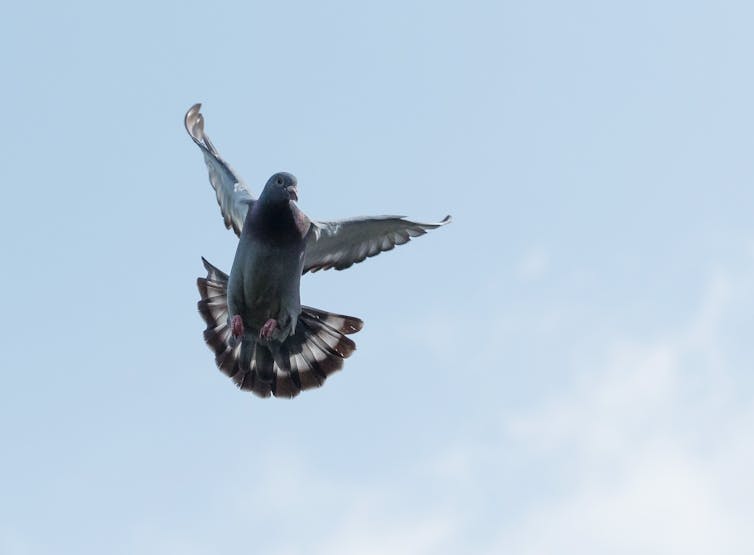
Homing pigeons are known for their uncanny ability to find their way home – navigating complex and changing landscapes. In fact, they do this so well they were used as a source of secure communication more than 2,000 years ago.
Julius Caesar reportedly sent news of his conquest of Gaul back to Rome via pigeons, as did Napoleon Bonaparte following his defeat by England in the 1815 Battle of Waterloo.
We know pigeons use visual cues and can navigate based on landmarks along known travel routes. We also know they have a magnetic sense called “magnetoreception” which lets them navigate using Earth’s magnetic field.
Read more: Explainer: how do homing pigeons navigate?
But we don’t know exactly how they (and other species) do this. In research published today in the Proceedings of National Academy of Sciences, my colleagues and I tested a theory that attempts to link magnetoreception in homing pigeons with tiny lumps of iron-rich material found in their inner ears.
By using a new kind of magnetic microscope, we confirmed this isn’t the case. But the technology has opened the door for us to investigate the phenomenon in several other species.
The Current Hypotheses
Scientists have spent decades exploring the possible mechanisms for magnetoreception. There are currently two mainstream theories.
The first is a vision-based “free-radical pair” model. Homing pigeons and other migratory birds have proteins in the retina of their eyes called “cryptochromes”. These produce an electrical signal that varies depending on the strength of the local magnetic field.
This could potentially allow the birds to “see” Earth’s magnetic field, although scientists have yet to confirm this theory.
The second proposal for how homing pigeons navigate is based on lumps of magnetic material inside them, which may provide them with a magnetic particle-based directional compass.
We know magnetic particles are found in nature, in a group of bacteria called magnetotactic bacteria. These bacteria produce magnetic particles and orient themselves along the Earth’s magnetic field lines.
Scientists are now looking for magnetic particles in a range of species. Potential candidates were found in the upper beak of homing pigeons more than a decade ago, but subsequent work indicated these particles were related to iron storage and not magnetic sensing.
Read more: New evidence for a human magnetic sense that lets your brain detect the Earth's magnetic field
A Peek Inside A Pigeon’s Ear
The new search is now underway in the inner ear of pigeons, where iron particles known as “cuticulosomes” were first identified in 2013.
Single cuticulosomes have been located within distinct regions in the pigeon inner ear where other known sensory systems exist (such as for hearing and balancing during flight). In theory, if there were a magnetic sensing system in pigeons, it should be located close to other sensory systems.
But to determine whether iron cuticulosomes can act as magnetoreceptors in pigeons, scientists need to determine their magnetic properties. This is no mean feat, since cuticulosomes are 1,000 times smaller than a grain of sand.
What’s more is they are only found in 30% of the hair cells within the inner ear, making them difficult to identify and characterise.
To tackle this problem our group at the University of Melbourne, together with colleagues from Vienna’s Institute of Molecular Pathology and the Max Planck Society in Bonn, turned to a new imaging technology to explore the magnetic properties of iron cuticulosomes in the pigeon inner ear.
We developed a magnetic microscope that uses diamond-based sensors to visualise delicate magnetic fields emanating from tiny magnetic particles.
Disproving The Theory
We carefully studied thin sections of the pigeon inner ear placed directly onto the diamond sensors. By applying magnetic fields of varying strengths to the tissue, we were able to gauge the magnetic susceptibility of single cuticulosomes.
Our results showed the magnetic properties of the cuticulosomes were not strong enough for them to act as a magnetic particle-based magnetoreceptor. In fact, the particles would need to be 100,000 times stronger to activate the sensory pathways required for magnetoreception in pigeons.
However, despite the search for the elusive magnetoreceptor coming up short, we are extremely excited by the potential of this magnetic microscope technology.
We hope to use it study a host of magnetic candidates across a variety of species including rodents, fish and turtles. And by doing so we can focus not only on cuticulosomes, but a range of other potentially magnetic particles.![]()
David Simpson, School of Physics, Senior Lecturer, The University of Melbourne
This article is republished from The Conversation under a Creative Commons license. Read the original article.
Festival Grants To Keep Seniors Active
- Online Safety in a Connected World - Avalon Computer Pals for Seniors Inc - Pittwater Electorate
- Walks and Talks in Ivanhoe Park, Manly - Friends of Ivanhoe Park Botanical Garden Incorporated - Manly Electorate
Cheaper Prostate Cancer Treatment PBS Listed
Alignment Of Regulations Across Care And Support Sectors
Coffee And Tea Drinking May Be Associated With Reduced Rates Of Stroke And Dementia
Most common passwords of 2021: here’s what to do if yours makes the list

If you use “123456”, “password” or “qwerty” as a password, you’re probably aware that you’re leaving yourself vulnerable to hackers. But you’re also not alone – these are three of the top ten most common passwords around the world, according to a new report.
In partnership with independent researchers, password management service NordPass complied millions of passwords into a dataset to determine the 200 most commonly used passwords around the world in 2021.
They analysed the data and presented results across 50 countries, looking at how popular various choices were in different parts of the world. They also looked at password trends by gender.
The findings show password choices are often attached to cultural references. For example, people across several countries take inspiration from their favourite football team. In the UK, “liverpool” was the third most popular password, with 224,160 hits, while the name of Chilean football club “colocolo” was used by 15,748 people in Chile, making it the fifth most common choice.
In some countries passwords relating to religion were popular. For example, “christ” was the 19th most common password used in Nigeria, used 7,169 times. Meanwhile, “bismillah”, an Arabic phrase meaning in the name of Allah, was used by 1,599 people in Saudi Arabia – the 30th most common choice.
The report also reflected differences between genders. Women tend to use more positive and affectionate words and phrases such as “sunshine” or “iloveyou”, while men often use sports-related passwords. In some countries, men use more swear words than women.
While music-themed passwords were popular across both genders, choices like “onedirection” or “justinbieber” were more popular among women, whereas men favoured bands such as “metallica” and “slipknot”.
Choose Long And Complex Passwords
Passwords remain the main authentication mechanism for computers and network-based products and services. But we know people continue to choose weak passwords and often don’t manage them securely, leaving themselves vulnerable to online security threats.
Weak passwords are easy to guess and can be cracked with minimal difficulty by attackers using brute-force methods (trying all letter, number and symbol combinations to find a match). They are also easy targets for a dictionary attack, which is a systematic method attackers use to guess a password, trying many common words and variations of these.

To overcome the security issues associated with password-based authentication systems, researchers and developers are now focused on creating authentication systems which don’t rely on passwords at all.
In the meantime, two-factor authentication (2FA) or multi-factor authentication (MFA) methods are a good way to secure your accounts. These methods combine a password with biometrics information (for example, a face scan or fingerprint) or something you have, like a token.
You can create a password that’s both strong and memorable by combining three random words. Machine-generated passwords are also difficult to guess and less likely to appear in password dictionaries used by attackers.
But of course, all of this is easier said than done. One of the challenges we face in today’s digital age is password overload. And it can be difficult to remember complex passwords, particularly machine-generated ones.
So it’s a good idea to use a reliable password manager for this purpose. Relying on your web browser to remember your passwords is less secure – it’s possible attackers can exploit vulnerabilities in the browser to access stored passwords.
NordPass’ findings, although not published in a peer-reviewed journal, align with what we know from similar lists published elsewhere – that the most popular passwords are weak.
Hopefully, if you see one of your passwords on this list, it will be impetus to change it to something stronger. Ethical hackers – people who work to prevent computers and networks from being hacked – could also use these insights for good. On the other hand, we have to acknowledge the possibility that hackers could use this information to target password attacks. This should be all the more reason to strengthen your passwords.![]()
Chaminda Hewage, Reader in Data Security, Cardiff Metropolitan University and Elochukwu Ukwandu, Lecturer in Computer Security, Department of Computer Science, Cardiff Metropolitan University
This article is republished from The Conversation under a Creative Commons license. Read the original article.
Beyond Bluey: why adults love re-watching Australian kids’ TV from their childhoods

Due to the COVID-19 extended lockdowns this year, as well as greater accessibility on streaming services, many adults have been returning to their childhoods via nostalgic kids’ TV viewing.
As part of our research project, Australian Children’s Television Cultures, we surveyed over 600 adults about their viewing habits — and it turns out some viewers never forget the joy of the television shows that they raced home to watch after school.
Many survey participants confessed they had simply never stopped watching children’s shows in the first place. Australia’s own Dance Academy (2010-2013) was frequently mentioned in the responses as a show that even adult viewers “can watch… anytime and feel connected with,” as one respondent put it.
Streaming Nostalgia
For those who didn’t keep their old VHS tapes or DVDs, it has been the advent of streaming services, from YouTube to Netflix, that has enabled viewers to rediscover their cherished kids’ shows of old. Nearly two thirds of adult respondents have revisited Australian children’s shows in recent years, most often via online clips and streaming services.
In our survey, Round the Twist (1989-2001) emerged as the favourite Australian children’s television show to revisit, with Lift Off! (1992-1995), Lockie Leonard (2007-2010) and Play School (1966-) also highly placed.
Netflix has licensed a swathe of Australian kids shows, among them Round the Twist and Lockie Leonard. Our survey showed that these classic programs not only turn up as recommendations on Netflix kids’ profiles, but in adults’ recommendations as well, whether or not they have children. Indeed, Netflix has been keen to license and commission nostalgic content with intergenerational appeal.
While there’s nothing new about adults getting swept up in nostalgia for childhood viewing, the streaming era has made it even easier to pass on these family viewing traditions.
Read more: Round the Twist's fans grew up – and their love for the show grew with them
Kids’ Shows In Lockdown
The heightened nostalgic urge to return to old TV shows has also been linked to the COVID-19 lockdowns many of us have recently been through, or indeed are still experiencing.
In our survey, many respondents mentioned the lockdown made them more likely to revisit children’s TV from their youth. As one survey respondent noted, “in these strange and chaotic COVID-19 times, I’ve been really feeding into the nostalgia.”
Nostalgia emerged as a term in 1688 to describe a disease primarily associated with soldiers longing to return home, even though upon their return, home was never quite the same. The word itself reflected this bittersweet combination, forged from the Greek nostos (homecoming) and algos (pain). In popular culture, nostalgia is frequently associated with warm and fuzzy feelings, but, as Svetlana Boym influentially suggests, nostalgia is also a type of grieving for a past that has been lost.
Returning to kids’ TV is a way of both grieving for and celebrating our own past childhood, as well as a pre-COVID world we used to enjoy. In other words, nostalgia is not as simple as we might at first assume.
Family Viewing
Our survey responses indicate families have been uniting across the divide of lockdown restrictions and closed borders to watch old kids’ TV shows together:
“In lockdown, it’s provided a connection point for my family” by rewatching Round the Twist and Sky Trackers (1994), one respondent noted. They explained, “we talk about what we remember, and tell jokes about it consistently through messaging services.”
Not only parents but also grandparents and babysitters revealed they enjoy sharing beloved shows from their childhood with the next generation. This strategy isn’t always successful given tastes and expectations have changed, with today’s kids finding some old shows “bonkers” or describing the special effects as dated. As one parent from the survey notes, “having children now, I want to show them some of the shows I loved (whether they like it or not!)”
Many of our survey participants discussed this shared viewing across generations, but also just among other adults. So as it happens, kids’ TV isn’t just for kids.
Unifying A Generation
Beyond family members, our participants are finding connections with their own generation on social media through old kids’ shows they still enjoy. Even young adults are already feeling nostalgic.
“I have loved watching on TikTok people recreating some of the iconic scenes” from H2O: Just Add Water (2006-2010) and Blue Water High (2005-2008), one participant told us. They explained, “When scrolling through the comments of these videos there’s often hundreds of other young Australians that relate as they had the same fond memories of these shows which I feel unites us.”
With so much content now spread across broadcasting, cable and streaming television services, it’s uncertain whether today’s kids’ TV will offer this same sense of communal nostalgia to future generations — though Bluey (2018-) is surely a contender. Bluey is already the focus of popular memes and a successful recap podcast, so perhaps the show is a contemporary vehicle for adult viewers’ nostalgia about growing up in Australia, albeit in a new guise.
Read more: 'An idealised Australian ethos': why Bluey is an audience favourite, even for adults without kids
Ultimately, our research indicates that engaging nostalgically with kids’ TV has been an important means of social connection during the pandemic, both between adults and within and across different generations.
Although nostalgia was initially defined as a ‘disease’, today it is combating the division the pandemic has created, with locked down audiences using streaming services to reconnect with their favourite kids’ TV and each other.![]()
Djoymi Baker, Lecturer in Cinema Studies, RMIT University; Jessica Balanzategui, Senior Lecturer in Cinema and Screen Studies, Swinburne University of Technology; Joanna McIntyre, Lecturer in Media Studies, Swinburne University of Technology, and Liam Burke, Associate Professor and Cinema and Screen Studies Discipline Leader, Swinburne University of Technology
This article is republished from The Conversation under a Creative Commons license. Read the original article.
Is The Pension Fair?

COTA Australia Appoints Dr Stephen Judd AM As Inaugural ‘COTA Fellow’

Listening To Favourite Music Improves Brain Plasticity
Paul McCartney’s The Lyrics: an extraordinary life in song

Review: Paul McCartney, The Lyrics: 1956 to the Present, ed. Paul Muldoon, Allen Lane, 2021.
The Lyrics recounts Paul McCartney’s life and art through the “prism of his songs”. Despite its apparently unambiguous title, The Lyrics is not an exhaustive collection of the words to songs written or co-written by McCartney over his 60-year career. Rather, it brings together, across two volumes, 154 songs, some of which are universally known, and some of which are minor and/or off the beaten track of McCartney’s discography.
As well as reproducing the texts of these songs, The Lyrics includes commentaries by their author. These commentaries are based on 50 hours of recorded conversations, undertaken between 2015 and 2020, with the poet Paul Muldoon.
Muldoon, as editor, shaped these conversations into coherent mini essays, deleting his own voice in the process. The resulting product, richly decorated with over 600 photos and reproductions of memorabilia, is a kind of “self-portrait in song”.
Many songs are covered no doubt for their musical and/or literary importance. But many others, if not most, are included because they allow an entry into certain themes or periods of McCartney’s life. The commentary on Rocky Raccoon, for instance, leads into an anecdote about McCartney requiring stitches to his lip from a drunk doctor (an experience that indirectly led to all four Beatles sporting moustaches in 1967).
On My Way to Work (from the 2013 album NEW) allows McCartney to talk about his first job as a delivery man, which leads into the oft-repeated Beatles’ ur-narrative of when McCartney met John Lennon at a church fete in 1957.
Writing The Unexpected
McCartney’s primary strength (sometimes considered a fault by detractors) is melody, rather than words. And while it’s the case some of his lyrics can be facile even in their musical contexts, McCartney can be a fine lyricist. His lyrics, as he points out in his commentaries, often traffic in the unexpected (in the sense of the surreal and/or the nonsensical) and the comedic.
These characteristics are also observable in McCartney’s commentaries. The account of She Came in Through the Bathroom Window begins with the deadpan observation that
My mum was a nurse and my dad loved words, so I was the only one in my class who could spell ‘phlegm’.
McCartney – who long stood in Lennon’s shadow as a lyricist – most clearly came into his own as a lyricist with Eleanor Rigby, which was the first of McCartney’s songs to receive wide praise for its lyrical content.
Read more: Two of Us: inside John Lennon's incredible songwriting partnership with Paul McCartney
McCartney’s lyrics often revel in word play, and his wit, often seen by critics as a sign of facileness, is surely one of his great strengths. Maxwell’s Silver Hammer, from the Beatles’ Abbey Road (1969), was publicly dissed by Lennon and George Harrison at the time of its release, and it has often stood as an example of “bad McCartney”.
But the song is blackly comic, and it shows McCartney’s understanding of the comic potential of multisyllabic rhyme:
PC Thirty-One said, we’ve caught a dirty one
Maxwell stands alone.
(It’s not surprising that, as well as the obvious rock'n'roll antecedents, McCartney refers to the influence of the earlier Tin Pan Alley songwriters, such as Cole Porter and the Gershwins.)
As well as showing McCartney’s attraction to wit, Maxwell’s Silver Hammer highlights a feature noticed by both him and Muldoon: the use of the vignette. As Muldoon notes in his introduction, McCartney
has the capacity to render a fully rounded character from what might otherwise be merely a thumbnail sketch.
In songs such as Eleanor Rigby, Paperback Writer and Uncle Albert/Admiral Halsey, McCartney presents self-contained sketches of characters and situations, often bringing together the mysterious and the mundane.
This latter characteristic is most obviously found in the Beatles’ A Day in the Life, where McCartney’s section (“Woke up, fell out of bed …”) is placed within the psychedelic splendour of the greater body of the song by Lennon.
The mix of the extraordinary and the ordinary is a leitmotif that runs throughout The Lyrics. With his customary emphasis on parents, family, education and work, McCartney is also open to the unexpected and anarchic.
Ghosts Behind The Music
But there is also an elegiac feeling to this collection, with numerous references to McCartney’s late parents, and his late wife, Linda. The death of his mother, Mary, when McCartney was 14, is repeatedly evoked. In his commentary on Let it Be (famously inspired by a dream about “mother Mary”), McCartney cites two lines from Hamlet, a play he learnt at school.
Hamlet is a play about ghosts and hauntings and there are plenty of ghosts – in the form of lost friends and colleagues, most obviously Lennon – in The Lyrics.
But there is a more literary and musical sense of hauntedness in McCartney’s songs, something apparent in this book, with its emphasis on precedents, mimicry, and revisionism. Back in the USSR, for instance, is a parody of Chuck Berry via the Beach Boys.
The Lyrics reminds us McCartney’s greatness is his ability to inhabit styles and genres and make them his own.
What is extraordinary about this ability is not just McCartney’s facility, but also his range; from Rupert Bear (We All Stand Together) to Helter Skelter, from Here, There and Everywhere to his classical work (represented here by an aria from the Liverpool Oratorio), there seems to be almost no style that McCartney can’t turn his hand to.
In his foreword, McCartney compares The Lyrics to an “old snapshot album”, that vernacular storehouse of haunting presences, memory and loss. Like a photo album, The Lyrics can be dipped into anywhere, and one can find the serious and frivolous, the straightforward and the enigmatic, side by side. What is amazing is that these “snapshots” are, for the most part, the work of one person.![]()
David McCooey, Professor of Writing and Literature, Deakin University
This article is republished from The Conversation under a Creative Commons license. Read the original article.
Congratulations To The 2022 NSW Australians Of The Year
- Professor Veena Sahajwalla 2022 NSW Australian of the Year
- Abla Kadous 2022 NSW Senior Australian of the Year
- Dr Daniel Nour 2022 NSW Young Australian of the Year
- Shanna Whan 2022 NSW Local Hero

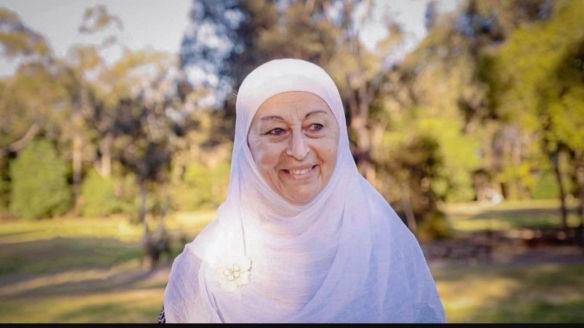


New NSW Curriculum Release In A Digital First
- Simple, concise language which identifies key knowledge and skills.
- Easily accessed and navigated on a new Digital Curriculum platform.
- Clear expectations on student reading progression.
- Renewed focus on handwriting.
- New supports for students with significant intellectual disability.
- Emphasis on ‘reasoning’ in mathematics.
- Advanced counting strategies.
Easternmost Roman Aqueduct Discovered In Armenia
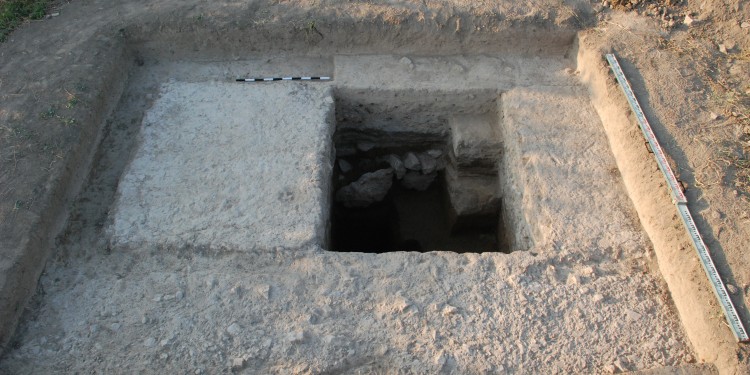
Using T Cells To Target Malignant Brain Tumours
Toward 'Off-The-Shelf’ Immune Cell Therapy For Cancer
Mathematicians Derive The Formulas For Boundary Layer Turbulence 100 Years After The Phenomenon Was First Formulated
Disclaimer: These articles are not intended to provide medical advice, diagnosis or treatment. Views expressed here do not necessarily reflect those of Pittwater Online News or its staff.
